The world's GREATEST desserts – how many British favourites made the list?
Desserts worth travelling for

pic0000/Shutterstock
Every culinary culture has its own speciality foods and recipes – and that includes desserts. From towering trifles and outrageous cakes to honey-soaked filo pastries and jellies swimming in sweet milk, here we reveal some of the most beloved desserts from around the globe, counting down to the tastiest of all.
Read on to discover the most delicious desserts the world has to offer. How many have you tried?
We've based our ranking on the enduring popularity of each dessert in its place of origin and beyond, and on the opinions of our well-travelled (and well-fed) team. The list is unavoidably subjective.
61. Rigó Jancsi, Hungary
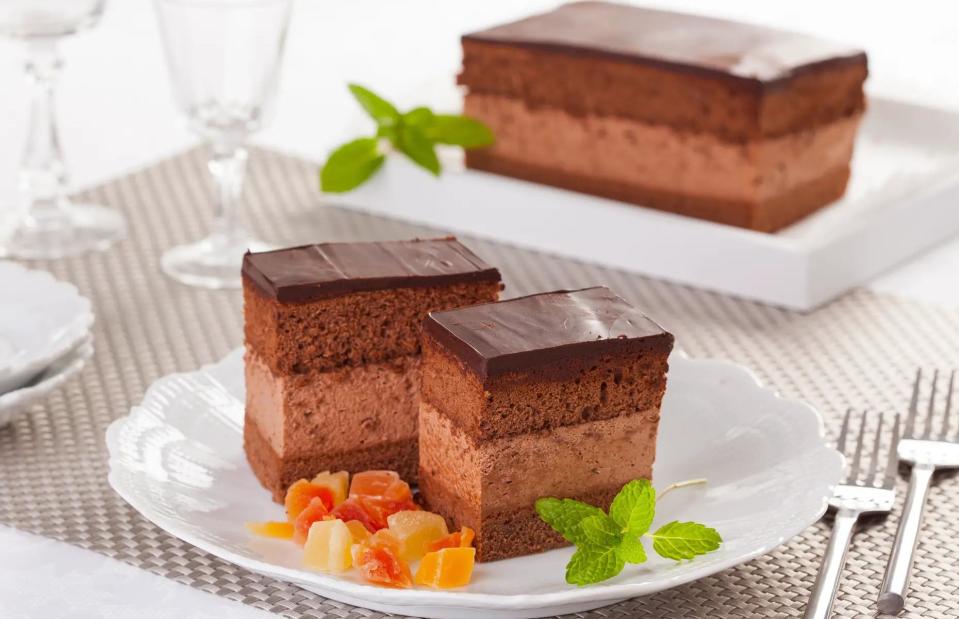
Hans Geel/Shutterstock
Hungary has a rich heritage when it comes to desserts – and its tastiest offering of all is perhaps Rigó Jancsi. Named after a famous Hungarian Romani violinist, this dish is made by sandwiching a thick, decadently rich chocolate cream filling (sometimes laced with rum or vanilla) between two layers of chocolate sponge cake. The whole thing is then finished with a dark chocolate fondant glaze.
60. Sorbet, various locations
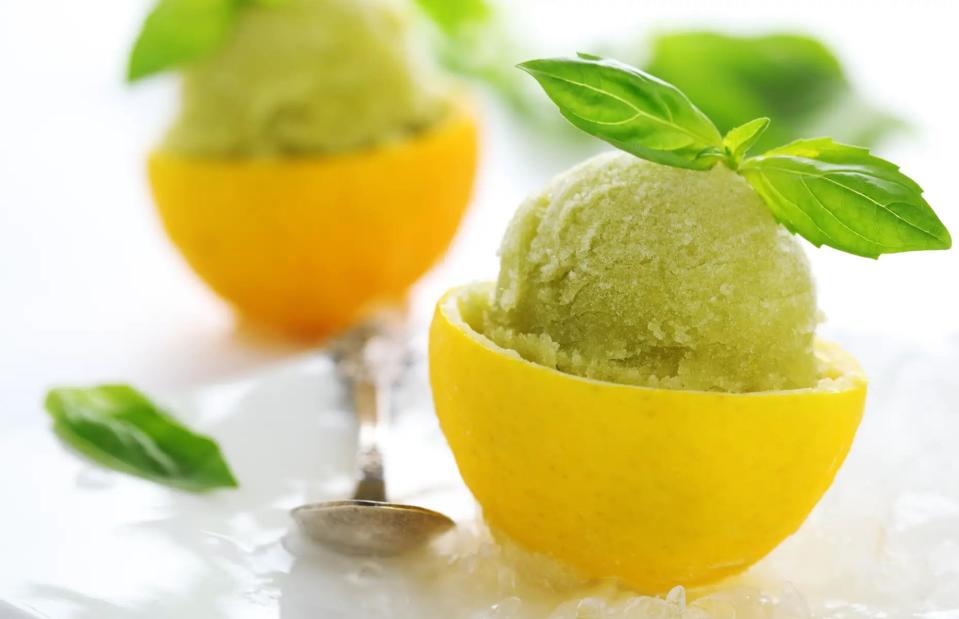
Gaak/Shutterstock
The history (and origin) of sorbet is a little hard to pin down. It's believed the first frozen desserts date back to at least 4,000 BC, served in ice houses in Mesopotamia. They're also linked to Persia, ancient Rome and China. Now, of course, they're found around the world, whether served as a palate cleanser between courses or enjoyed as a standalone treat. Typically, sorbets are dairy-free, made purely with ice flavoured with fruit juices. Alcohol is sometimes added to change the melting point and texture.
59. Sticky rice with mango, Thailand
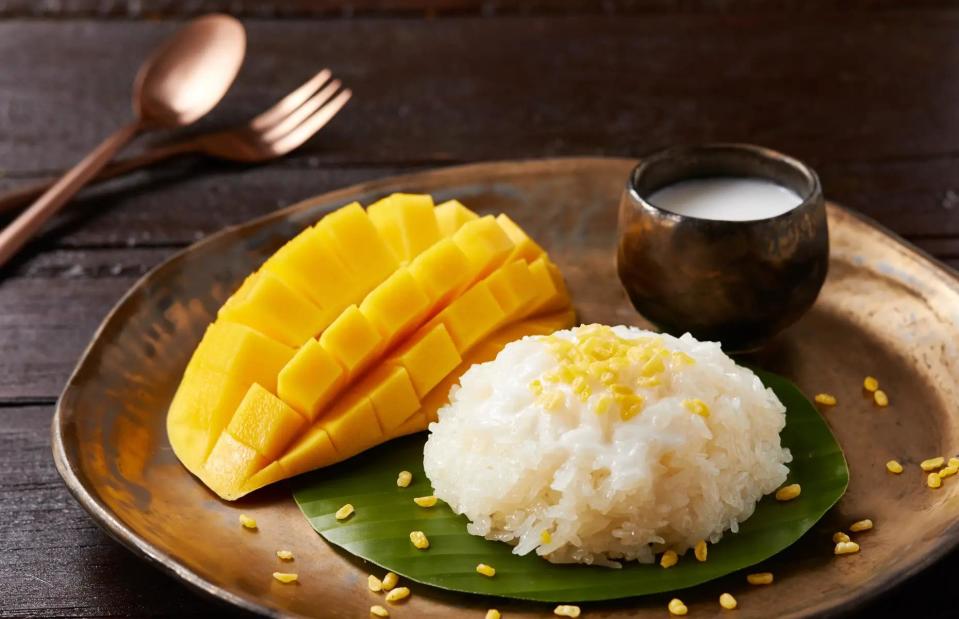
prasit jamkajornkiat/Shutterstock
While this dessert is most closely associated with Thailand, it's enjoyed all across South and Southeast Asia. The sticky rice is created by mixing cooked white rice with warm, sweetened and salted coconut milk. Once the rice has absorbed the sweet milk, it's sometimes wrapped in a banana leaf (or encased in bamboo), then steamed. The dish is finished with a freshly sliced mango, and fried mung beans are sprinkled over the top for extra crunch.
58. Ma’amoul, Egypt
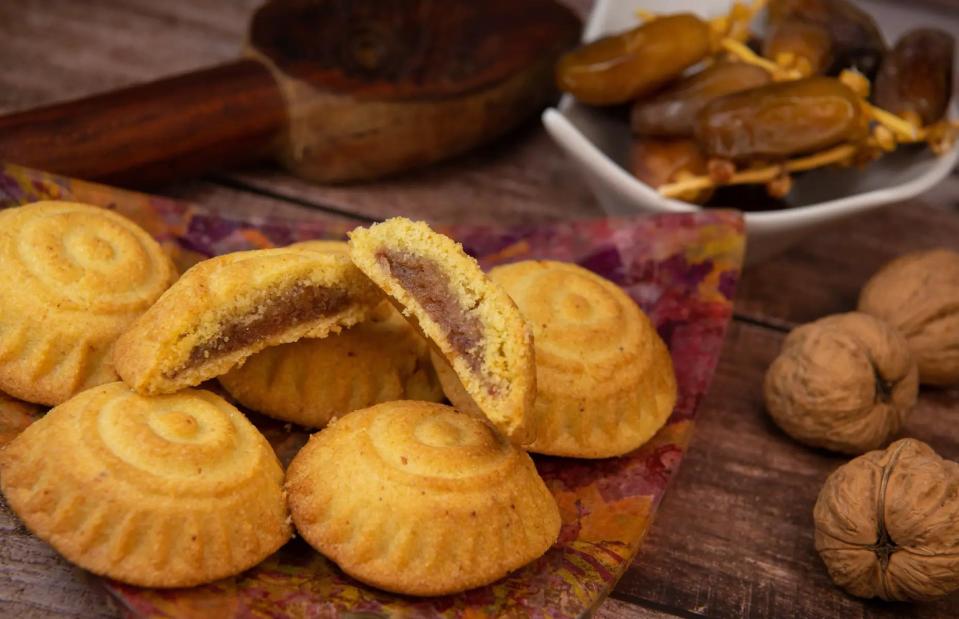
Middle East/Shutterstock
These cookies, made with butter and semolina, can be traced back to ancient Egypt, though they're hugely popular across the Middle East and North Africa today. After being shaped by hand, they're baked either plain or stuffed with figs, dates or nuts. Ma'amoul are traditionally made for religious festivals such as Easter, Purim and Eid – and they're especially popular during Ramadan, when the fast is broken.
57. M’hanncha, Morocco
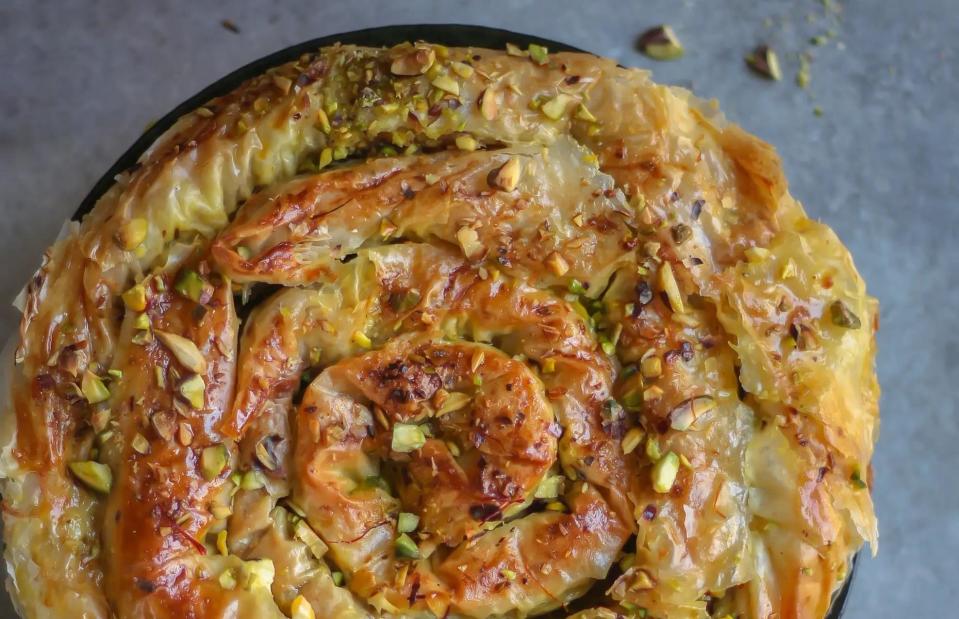
Thao Lan/Shutterstock
This traditional Moroccan speciality is also known as a snake cake, thanks to the way the long tube of filo pastry, stuffed with fragrant almond paste, is coiled around a circular baking tin. It's then given a seasoned egg wash before being baked to crispy perfection. While still hot from the oven, this irresistible dessert is doused in warm honey and coated in cinnamon and almond slices.
56. Vermicelles, France, Italy and Switzerland

Foto Stellanova/Shutterstock
A popular delicacy enjoyed during autumn and winter, this unusual-looking dessert is made from sweetened puréed chestnuts, which are pushed through a special press to create a distinctive spaghetti-like appearance. The dish has been an after-dinner treat in Italy since the 15th century, while in France it's called Mont Blanc and has been enjoyed since the 17th century. These days, it's often served accompanied by meringue or fresh cream and is perhaps most commonly found in Switzerland, especially in the Italian-speaking region of Ticino.
55. Thapthim krop, Thailand
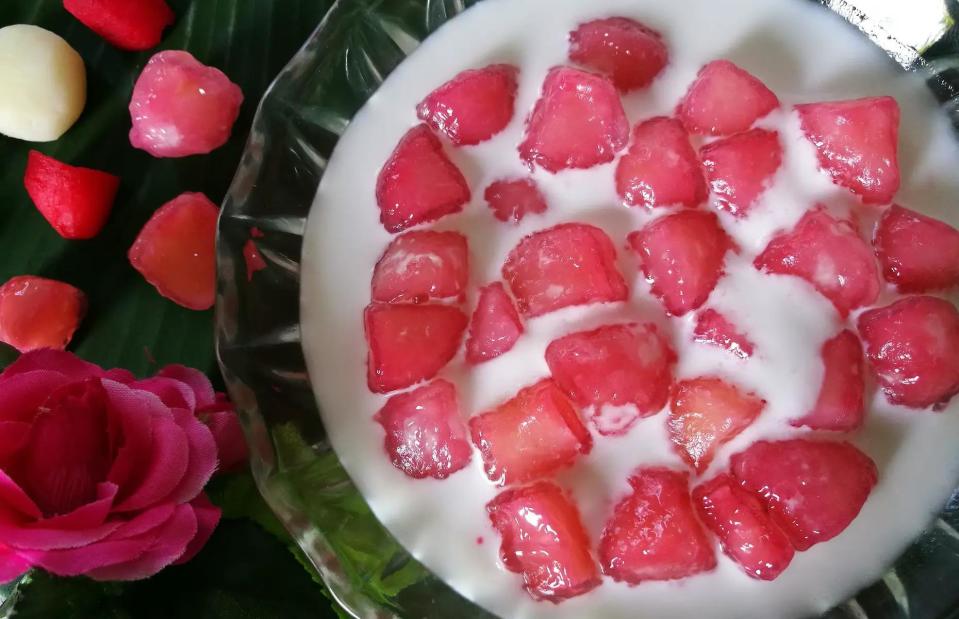
Paosun Rt/Shutterstock
This iconic Thai creation is also known as red rubies dessert, and it’s easy to see why. The water chestnuts at the heart of this dish are soaked in grenadine before being boiled in tapioca flour, giving them a gelatinous texture and beautiful red colour. These 'rubies' are then served swimming in white coconut cream for maximum deliciousness.
54. S’mores, USA
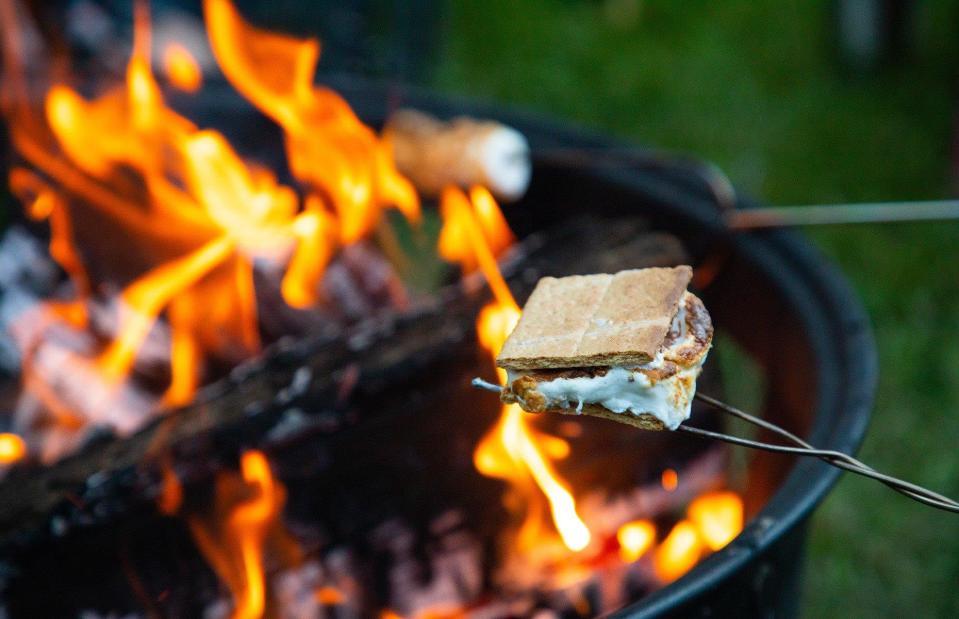
Samuel Scranton/Shutterstock
A staple around campfires and fire pits across the US (and gaining popularity elsewhere), s’mores are pretty simple. To make each one, a marshmallow and a piece of chocolate are sandwiched between two Graham crackers, then heated over an open flame until gooey and melted. Achieving that perfect melt without burning is something of a skill, though the odd treat lost to the flames is all part of the fun.
53. Dadar gulung, Indonesia
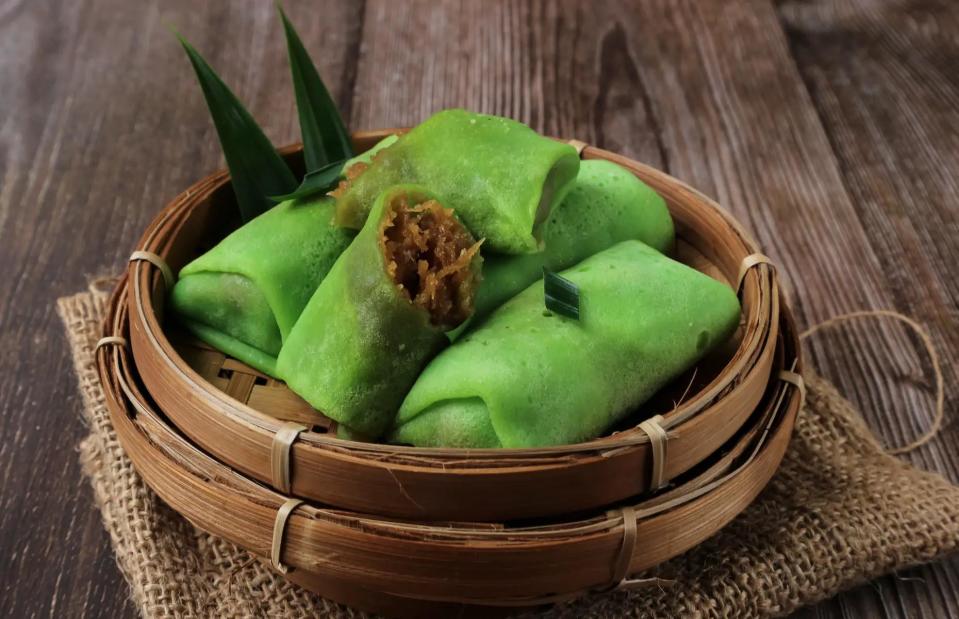
Rahmah Hastuti/Shutterstock
These Indonesian pancakes are among the country’s most popular snacks, instantly recognisable thanks to their vibrant green hue – the striking result of adding aromatic pandan leaves to the batter. This green mixture is fried in a touch of margarine, sprinkled with grated coconut and palm sugar, then rolled up. Dadar gulung are either sold from street stalls and eaten on the go, or plated up and cut into slices.
52. Cannoli, Italy
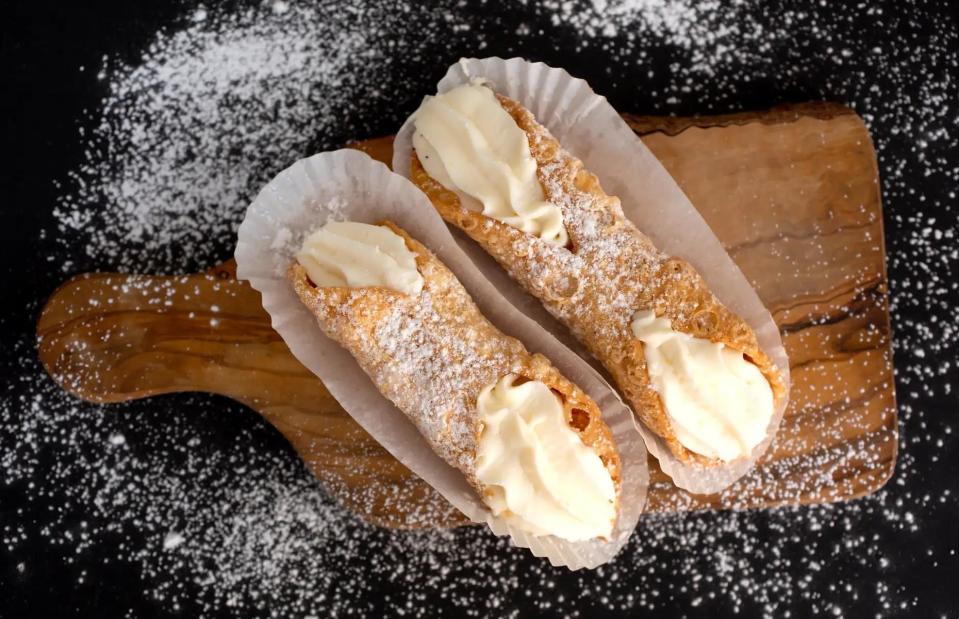
Pinkcandy/Shutterstock
Cannoli are among Italy’s oldest desserts; some food historians trace them back to the turn of the first millennium, when Sicily was under Arab rule. These iconic pastries consist of a deep-fried shell and a sweet, creamy ricotta filling. Fruit, chopped nuts and chocolate flakes can then be added to the ends, and a dusting of icing sugar traditionally finishes them off.
51. Crème caramel, France
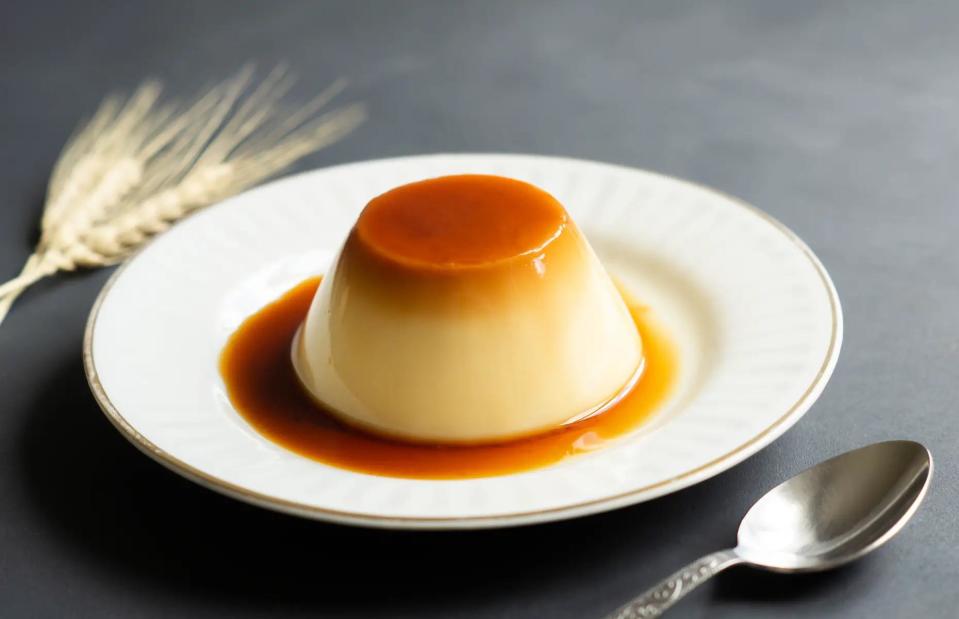
Halil ibrahim mescioglu/Shutterstock
This wonderfully wobbly French dessert begins with a dark caramel being poured into a mould. A vanilla custard is then added, and the dish is cooked in a bain-marie until gelatinous and creamy. It's found on restaurant menus in France and in other countries, though it's arguably most popular in Central and South America. Here, it's known as flan de leche, and it comes in dozens of regional variations.
50. Rum cake, Caribbean
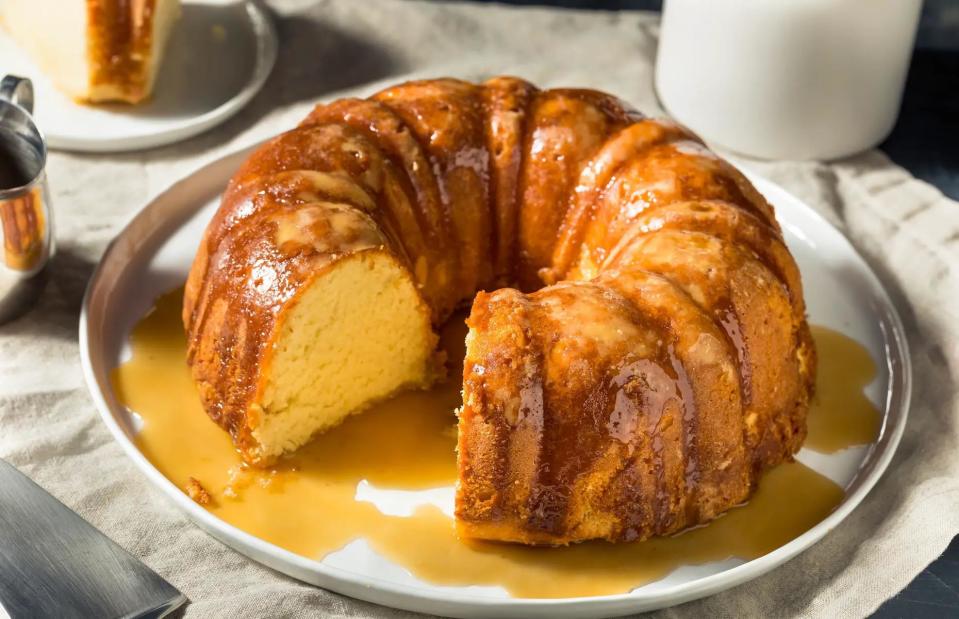
Brent Hofacker/Shutterstock
While recipes vary from place to place, all Caribbean rum cakes come together to celebrate one of the region’s most famous exports: rum. A rum cake starts out as a light fruit cake before being infused with the spirit. Sometimes rum is mixed directly into the cake batter, while other recipes see rum-soaked fruits stirred in. In Puerto Rico, where the base cake is a sponge, the whole thing is soaked in rum. These cakes are hugely popular at celebrations and holidays, especially Christmas.
49. Torrijas, Spain

Ana del Castillo/Shutterstock
Light, fluffy and all-round delicious, torrijas is like a Spanish version of French toast. The dreamy dessert is made by soaking a slice of bread in milk or wine, dipping it in egg, frying it until golden brown, then smattering it with honey and cinnamon. While the earliest written references to torrijas date to the 17th century, some believe the first versions of the dessert were eaten during Roman times. These days, the sweet treat is typically enjoyed at Easter.
48. Malva pudding, South Africa
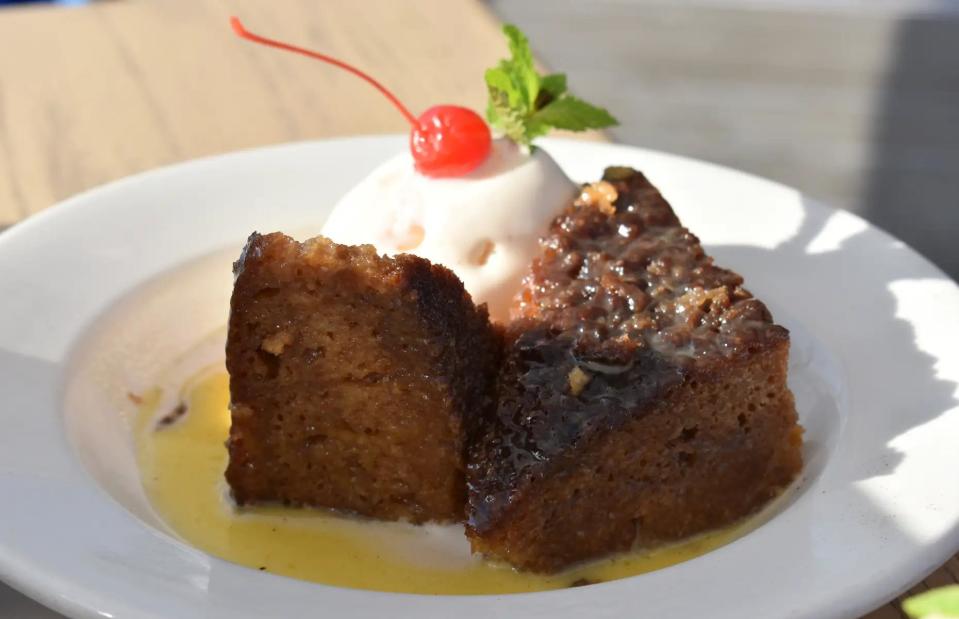
places4you/Shutterstock
The recipe for this dessert is thought to date back to Dutch colonial times, but its name is a matter for debate. Some believe it's from the Afrikaans word malvalekker, meaning marshmallow; however, others say the dessert was named after the Malvasia wine traditionally served with it. The soft, sponge-like pudding has apricot jam blended in and, once baked, it's doused in a cream sauce. Served warm with ice cream, it’s easy to see why this is one of South Africa’s favourite sweet dishes.
47. Koeksister, South Africa
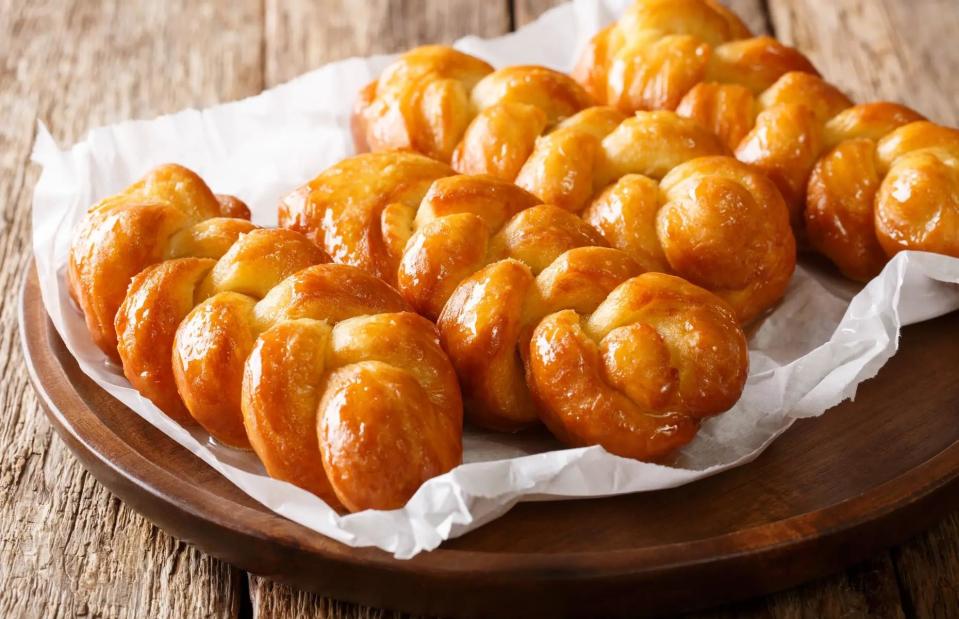
AS Foodstudio/Shutterstock
Every culinary culture has its own fried dough dessert. In South Africa, it's the koeksister. This sticky-sweet treat is made by plaiting together strips of dough, then deep frying them until golden and crispy. While still hot, the dough is dunked in cold sugar syrup, creating a delicious treat that's so sweet, it tastes almost like honey. There's also a Cape Malay variant that sees balls of deep-fried dough rolled in desiccated coconut.
46. Carlota de limón, Mexico

Marcos Castillo/Shutterstock
Drawing inspiration from classic French cake Charlotte Russe, this no-bake Mexican dessert is light, zingy and extremely moreish. It's whipped up by layering vanilla-flavoured Marie biscuits with a rich cream made from lime juice and condensed milk, usually in a square or rectangular glass dish. The treat is then left to set in the fridge or freezer until firm. Carlota de limón is often enjoyed during holidays and celebrations.
45. Banoffee pie, England, UK
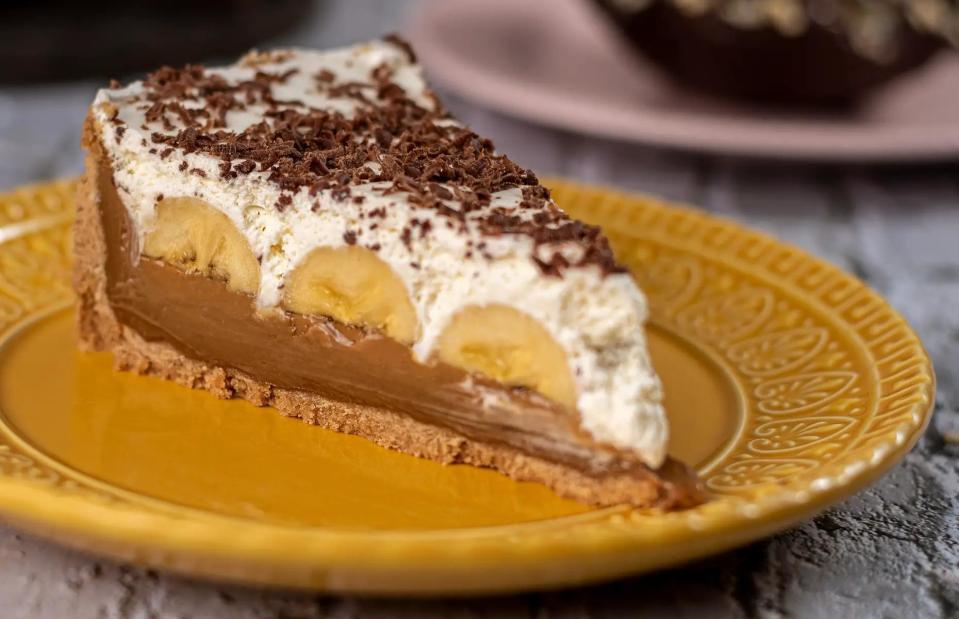
Mariana Silvestre/Shutterstock
While advertisers once claimed the banoffee pie as an American invention, it actually hails from England. The pie, which has a crushed biscuit and butter base topped with sliced banana, a thick caramel sauce and whipped cream, was created in 1972 at the Hungry Monk Restaurant in Jevington, East Sussex. The recipe’s inventors even once put up a £10,000 (around $12,700) reward for anyone who could disprove the dish’s origins – and no one was able to.
44. Alfajores, South America

etorres/Shutterstock
Gooey, sticky alfajores are hard to resist, which is probably why the sweet treats have become a staple dessert across South America. A common sight in bakeries, alfajores feature sweet dulce de leche (milk jam) sandwiched between crumbly, shortbread-like biscuits. Some variations coat the biscuits with icing sugar, while others come dressed with chocolate and desiccated coconut.
43. Doughnuts, various locations
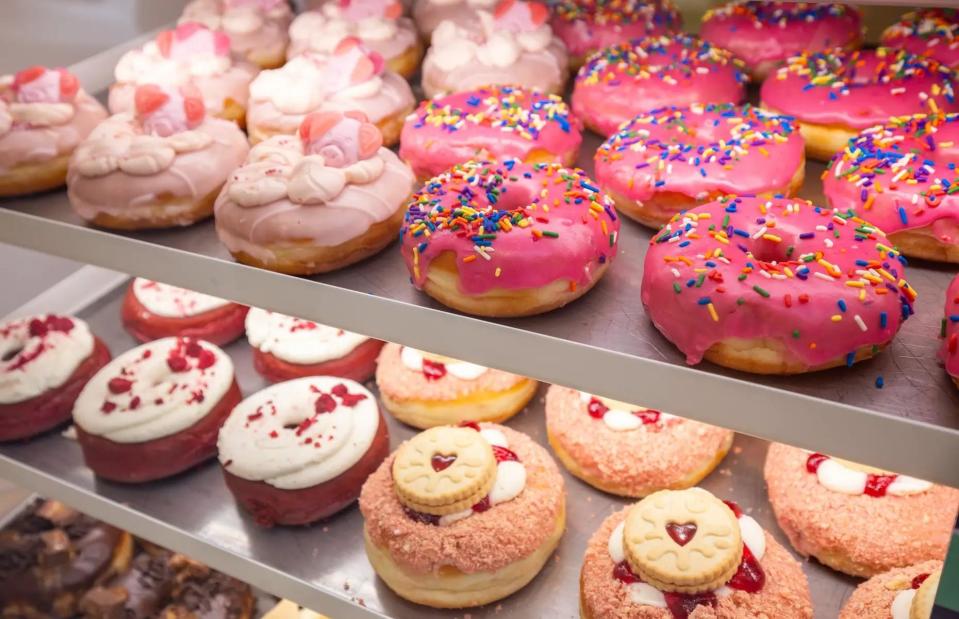
Falkovskyi/Shutterstock
It’s hard to pinpoint when exactly doughnuts were invented; do we go back to the fried balls of dough made in ancient Rome, or start when the traditional ring shape appeared, in the mid-19th century? Regardless of this sweet treat's history, the biggest doughnut advances have come much more recently; these days, the handheld snack has been elevated to a full-blown dessert, particularly in North America. Extravagant toppings, exotic glazes and innovative doughs have taken doughnuts to dizzy new heights.
42. Medovik, Russia
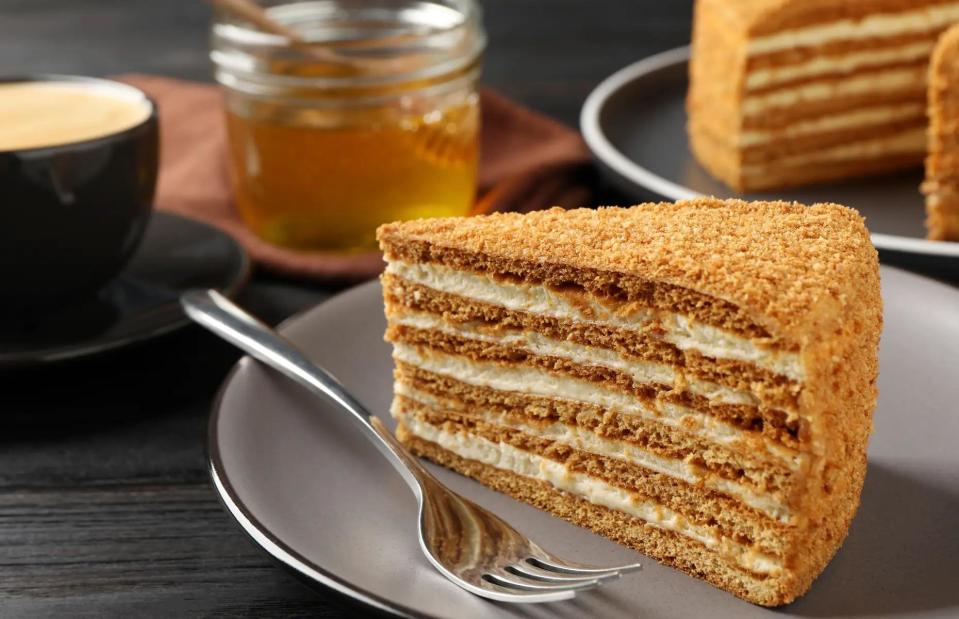
New Africa/Shutterstock
This Russian delicacy, which dates back to the 19th century, sees super-sweet honey and tangy sour cream nestled between layer upon layer of thinly sliced sponge. While some modern recipes suggest using a sweeter alternative to sour cream, such as condensed milk or custard, the true beauty of this dish lies in that classic combination of sweet and sour. Once constructed, a medovik cake is best left to soften in the fridge overnight before being dusted with crushed nuts.
41. Crumble, UK
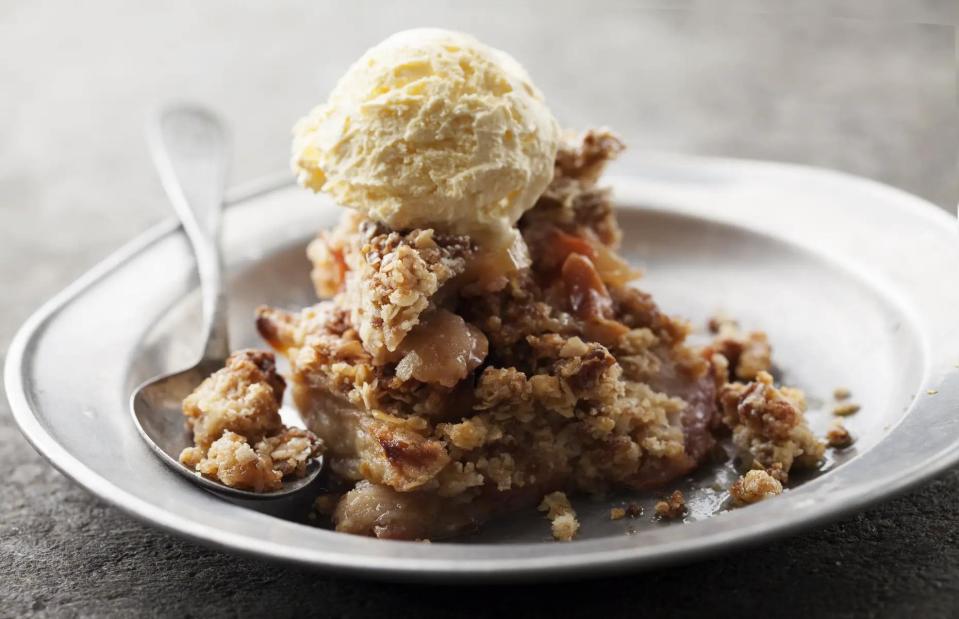
Liv friis-larsen/Shutterstock
No dish signifies autumn in the UK more than crumble. Almost any fruit can be baked into a crumble, although some of the most popular fillings are apple, blackberry (often with apple), plum and rhubarb. The fruit is layered in a dish, either raw or as a compôte, before being topped with a crumbly mix of butter, sugar and flour. The whole thing is then baked until the top is crisp, and the fruit is sweet and sticky. Then it’s time for the hardest decision: do you eat it with custard, cream or ice cream?
40. Lamington, Australia
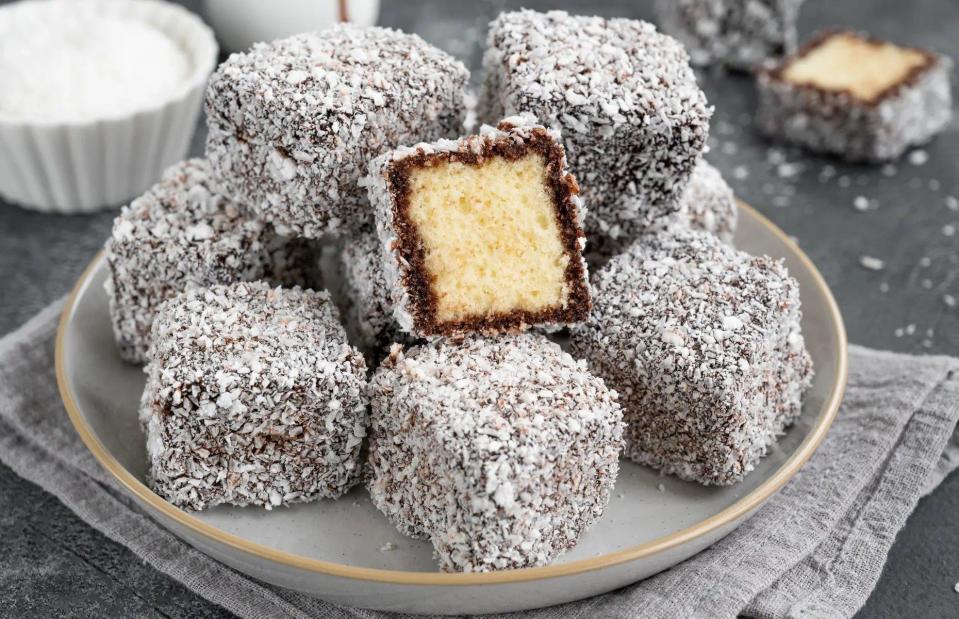
irina2511/Shutterstock
For many Australians, few things in life can beat a good Lammo. Lamingtons are squares of sponge cake coated in chocolate sauce and rolled in desiccated coconut. Some versions add a layer of cream in the middle of the sponge, though most stick to the basic recipe. This dessert may be simple, but it's a staple of Australian coffee tables and bake sales. In fact, it's so beloved that 21 July is celebrated as National Lamington Day.
39. Bread and butter pudding, England, UK

Claire Fraser Photography/Shutterstock
A nostalgic dessert for those who grew up in the UK, bread and butter pudding was born out of necessity. It’s believed to date back to 11th-century England, when food was scarce and home cooks took to soaking stale bread in boiling water, rubbing it with sugar and spices and cooking it until the interior was soft and warm. By the 13th century, recipes included eggs, milk and butter, and the dish became known as bread and butter pudding. These days, everything from creamy custard and dried fruit to melty chocolate can feature in the bake.
38. Profiteroles, France
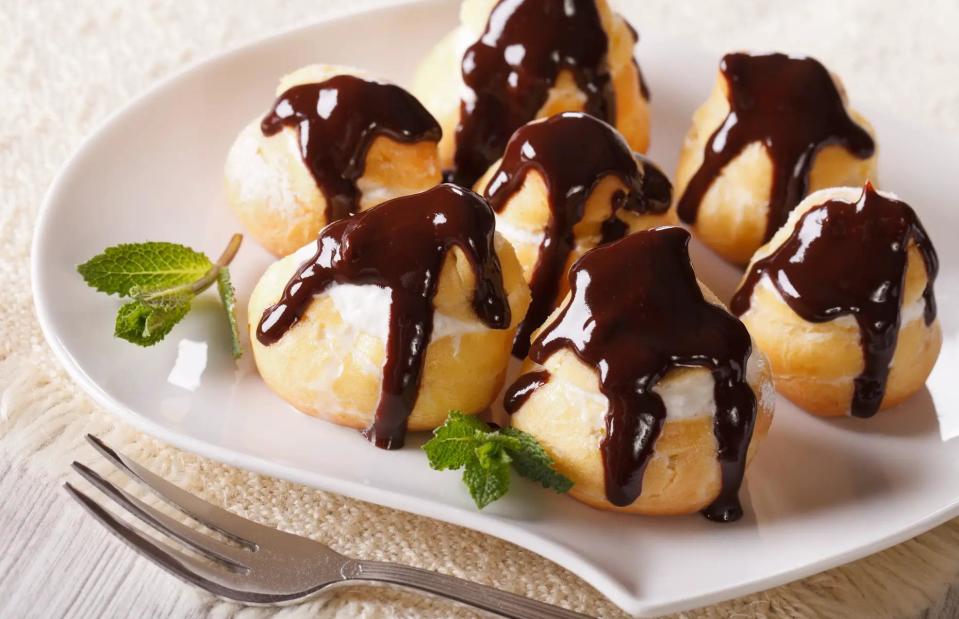
AS Foodstudio/Shutterstock
Profiteroles are golf ball–sized spheres of choux pastry that are traditionally filled with whipped cream or custard, then coated in a chocolate ganache glaze. There are many variations on the recipe, though; profiteroles can be dusted with sugar, drizzled with a caramel glaze or made with flavoured cream. They're notoriously tricky to make, thanks to the precision needed for the pastry – and the croquembouche, that beautiful, vertiginous tower of profiteroles held together by caramel, is one of the ultimate showstopper desserts.
37. Galaktoboureko, various locations

AS Foodstudio/Shutterstock
While the exact origins of flaky, fluffy galaktoboureko are hotly contested – some believe it was invented during the Ottoman period, while others say it’s traditionally Greek – there’s certainly no denying how tasty it is. Essentially a pillowy, semolina-thickened custard pie with a filo casing, the pastry is baked, chilled, then doused with a spiced sugar syrup. The popular dessert is sold in pastry shops across Greece and other Balkan countries.
36. Gelato, Italy
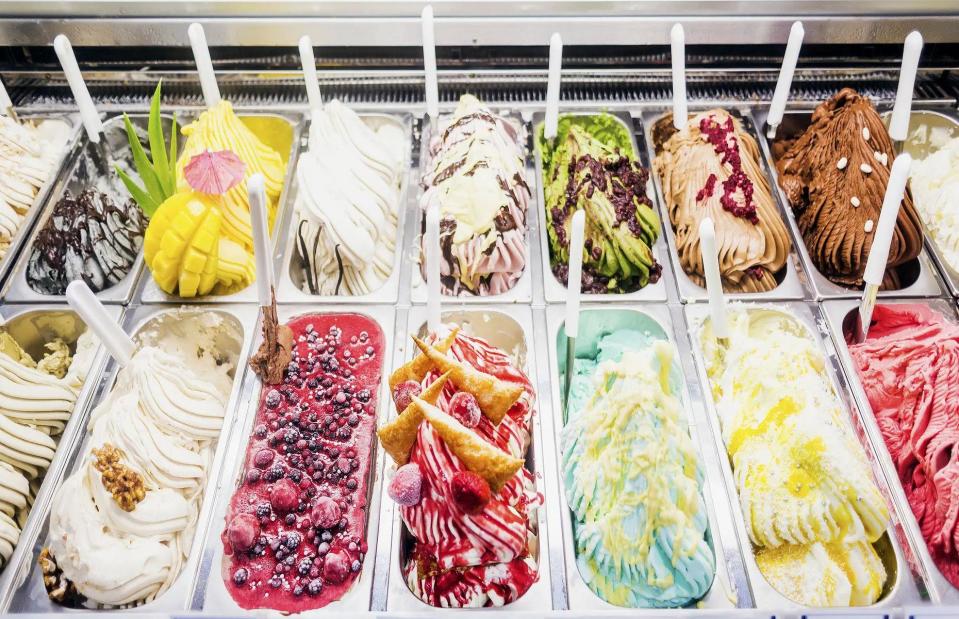
JM Travel Photography/Shutterstock
Ice cream is delicious in all its forms, but Italian gelato deserves a special mention. The key difference between gelato and regular ice cream is that gelato typically has a lower fat content and much more air. This leads to a lighter, fluffier dessert with more intense flavours than denser ice cream. No matter where you are in the world, it’s hard to pass by an Italian gelato shop without stopping in for a scoop of bright green pistachio or glossy dark chocolate.
35. Churros, Spain and Portugal
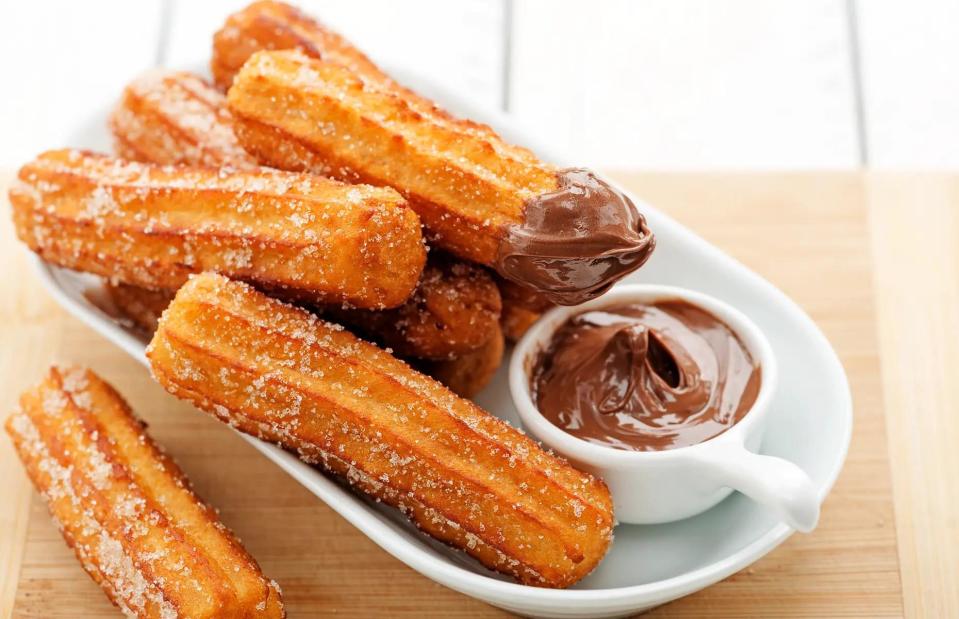
nelea33/Shutterstock
While the exact origins of churros are unknown, the recipe was popularised in Spain and Portugal before being spread around the world by traders and settlers. Now, churros are popular everywhere, from Latin America to Southeast Asia. To make them, long, star-shaped tubes of choux pastry are deep fried until golden on the outside and fluffy on the inside. They're then sprinkled with sugar (or cinnamon sugar) and served with chocolate sauce or condensed milk sauce for drizzling or dipping.
34. Gulab jamun, India
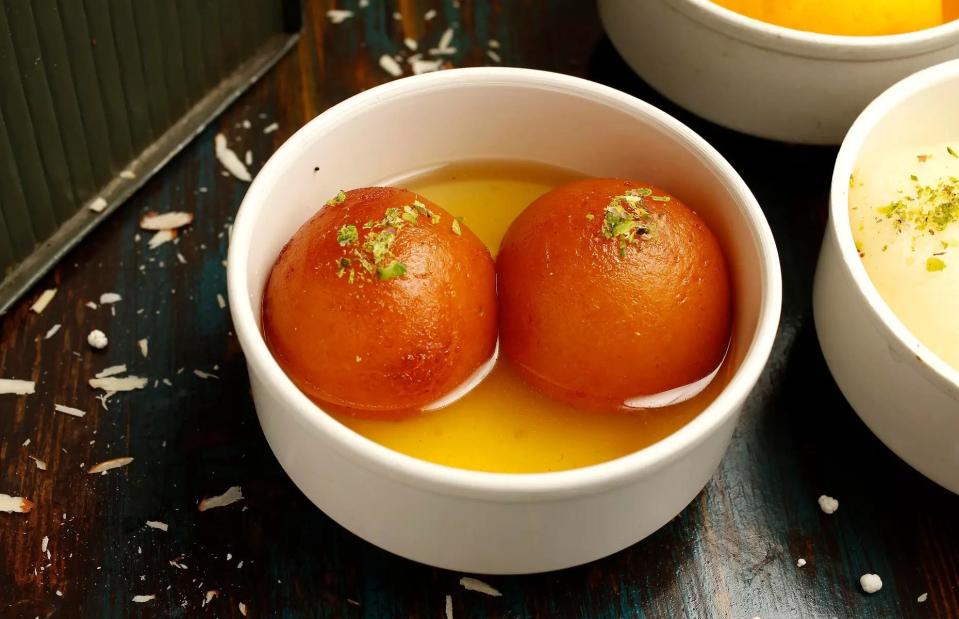
Touch2gether/Shutterstock
This dish isn't only popular in India, but all over the subcontinent and wherever a large South Asian heritage community is found. Traditionally, the dish starts with milk, which is cooked over a low heat until all the liquid has evaporated; however, a quicker version can be made with milk powder. This doughy solid is mixed with flour before being deep fried to a rich brown colour. The balls are then soaked in a flavoured sugar syrup and topped with ice cream and chopped nuts.
33. Trifle, England, UK
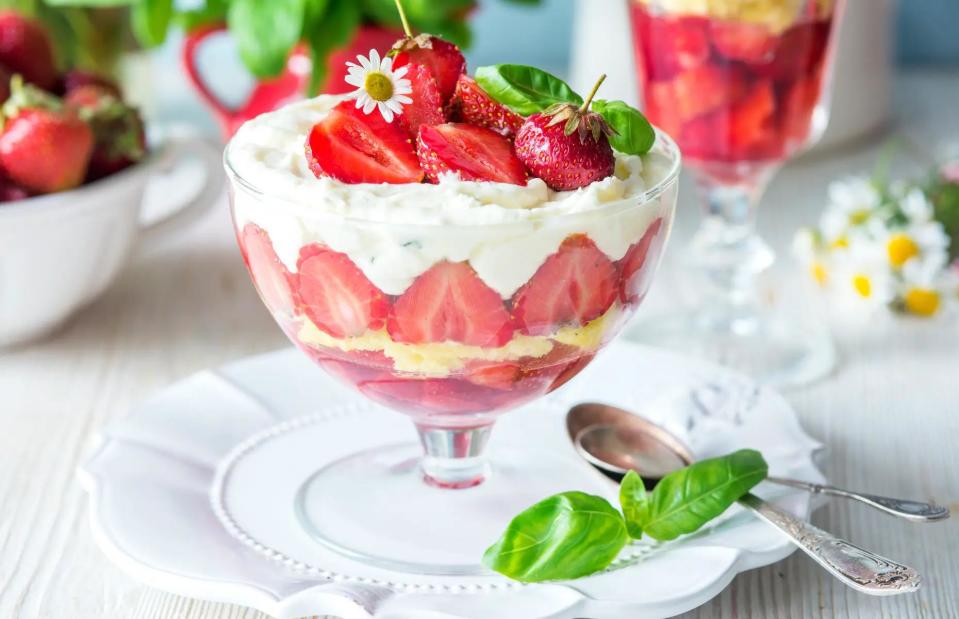
Irina Meliukh/Shutterstock
There's no fixed recipe for this quintessentially English dessert, which has many moveable parts. These usually include jelly or jam, sponge fingers or cake soaked in sherry or Madeira, cream, fresh fruit and cold custard. When the layers have been assembled, the trifle is chilled until set, making it the perfect make-ahead dessert for dinner parties or special occasions.
32. Snow ice, Taiwan
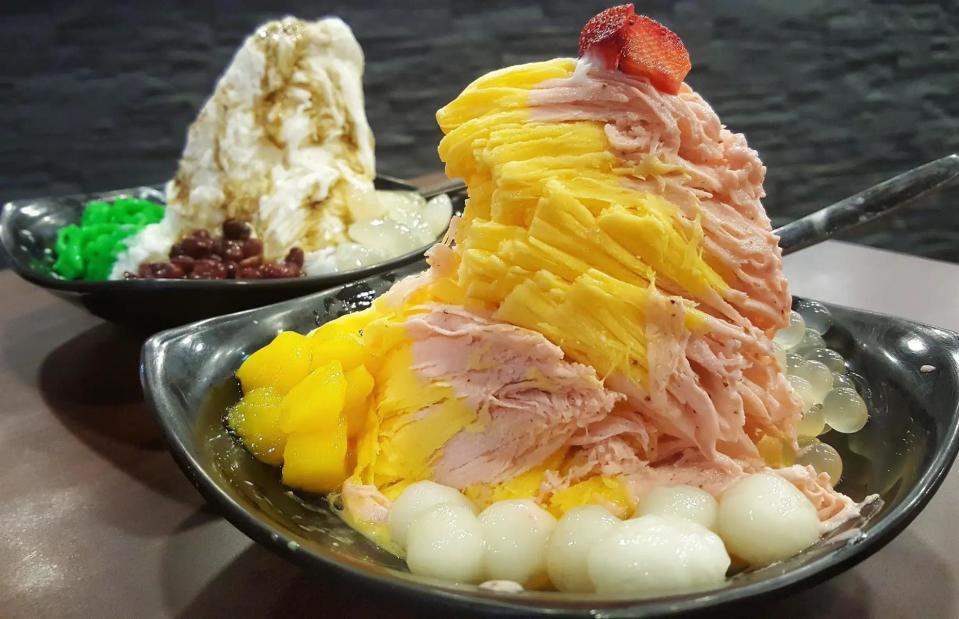
mrvirgin/Shutterstock
Shaved ice cream is all too often made as a street food gimmick; however, in Taiwan, it's done properly. Thin shavings of extra-smooth ice cream are used as a base for a host of delicious toppings, such as condensed milk, beans and tapioca balls. Fresh fruits are also frequently added, with mango the most popular choice in summer, and strawberry in winter.
31. Red velvet cake, USA
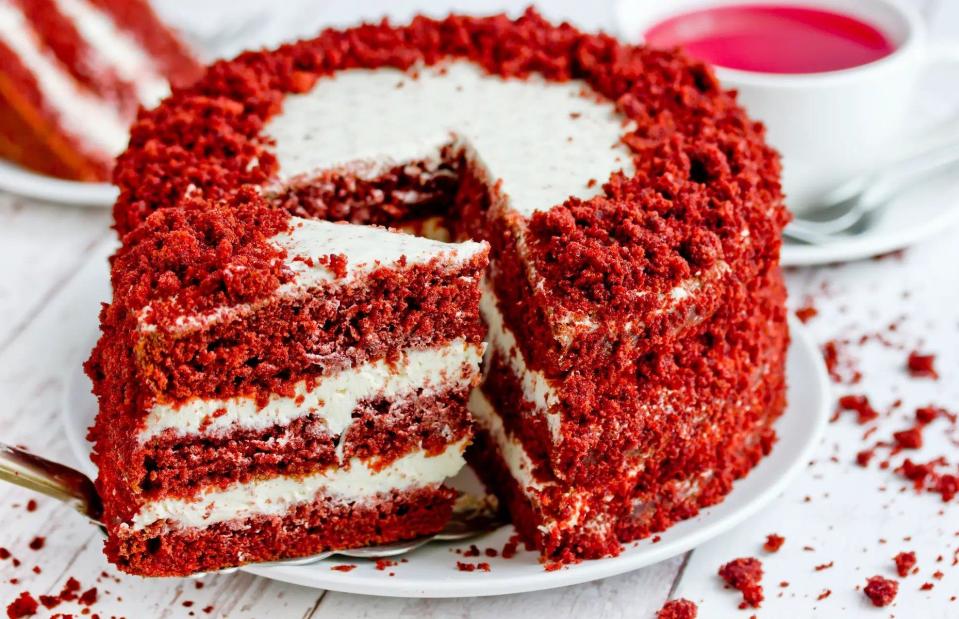
Anastasia_Panait/Shutterstock
The history of the red velvet cake, and its place in American history, is a hotly contested topic. Some claim that it was invented at New York City's Waldorf-Astoria hotel in the 1930s, but others insist it evolved from earlier recipes popular in the Southern states and Canada. The red colour originally came from the special cocoa used, without the natural colourings processed out. These days, however, beetroot juice or food dye is used in the cake batter to bring out the vivid red that contrasts so beautifully with the crisp white cream.
30. Crêpes Suzette, France
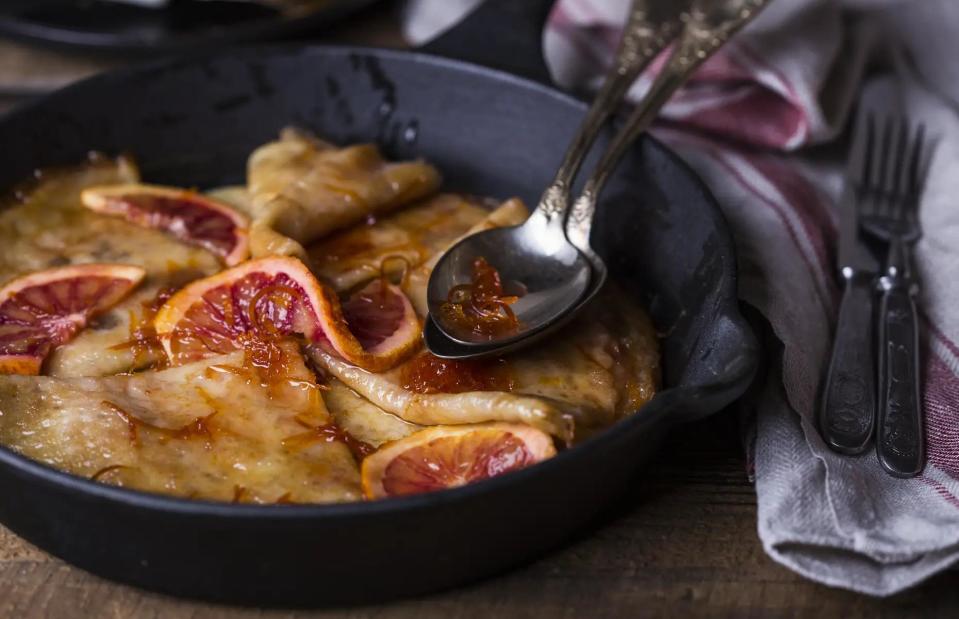
Pronina Marina/Shutterstock
There are few desserts as theatrical as crêpes Suzette. On the surface, this is quite a simple dish, with freshly made crêpes doused in a sauce of caramelised sugar, butter and orange. However, the true majesty comes in the presentation. Prepared tableside, crêpes Suzette are flambéed in Grand Marnier (or another liqueur), then served with a scoop of ice cream to contrast with the warm, sharp flavours.
29. Bienenstich, Germany
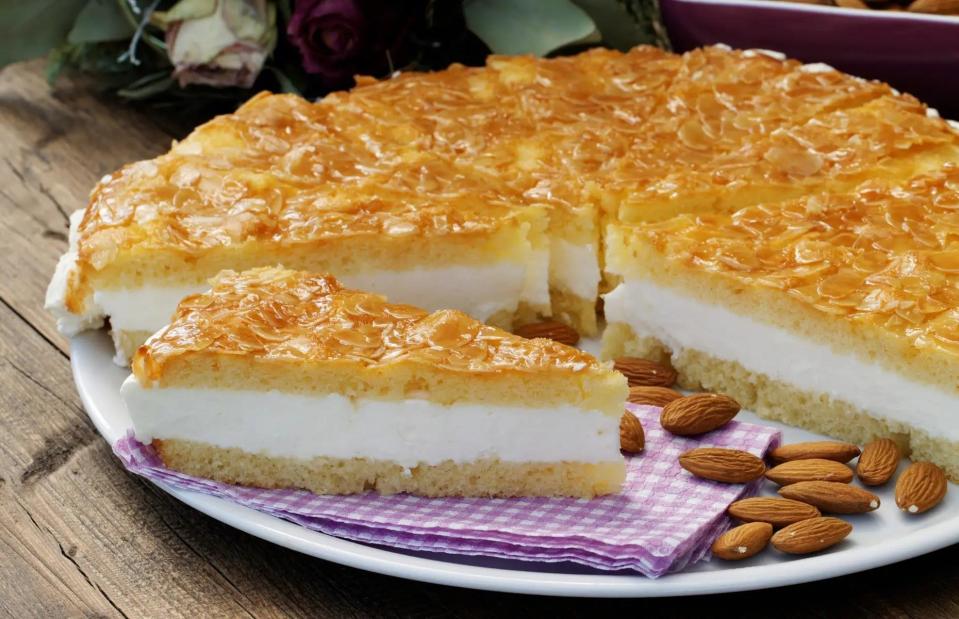
Racamani/Shutterstock
Although legend dates this German cake back to the late 15th century, the refrigeration needed for its cream filling suggests it might be a more modern invention. Regardless of when it was created, just be glad that it was. A bienenstich, also known as a bee sting cake, features a sweet yeast dough filled with a layer of vanilla custard or cream. The cake’s signature is the layer of caramelised almonds baked on top, giving a glorious crunch and nutty flavour to contrast with the sweet pastry and filling below.
28. Chocolate soufflé, France
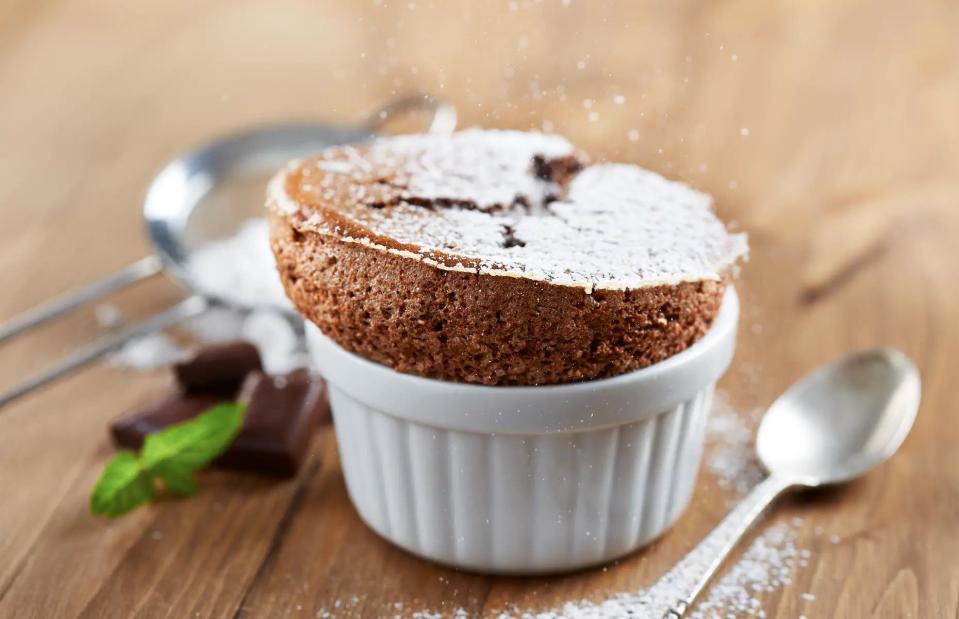
Raimunda-Iosantos/Shutterstock
There are few dishes that test the skills of chefs quite like a chocolate soufflé. Each step has to be completed perfectly, with soft beaten egg whites gently folded into a chocolatey cream. If done correctly, the soufflé will rise beautifully above the top of its ramekin, ready to be served with a scoop of vanilla ice cream.
27. Baked Alaska, USA
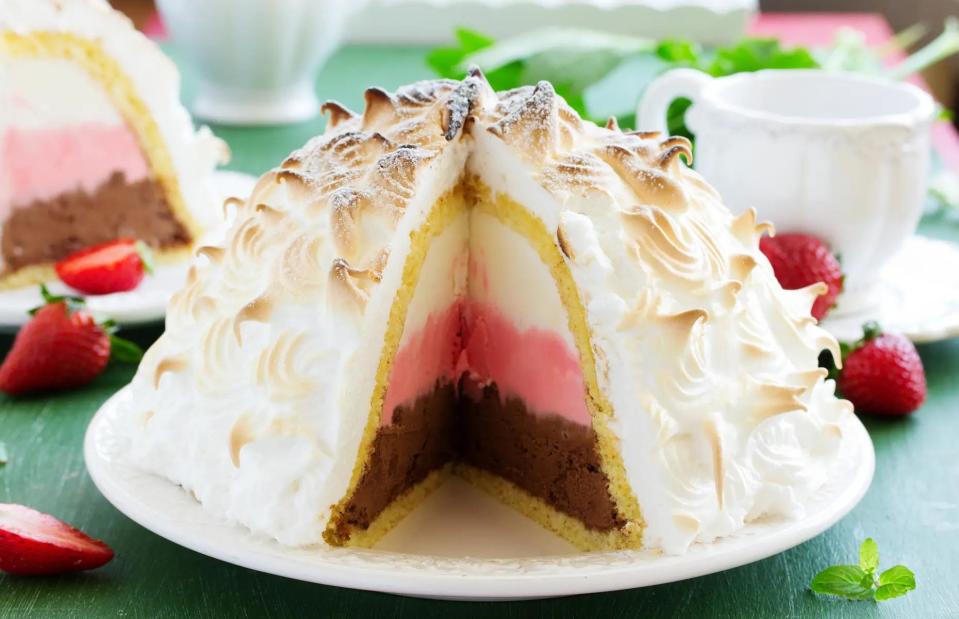
Lesya Dolyuk/Shutterstock
While early versions of baked Alaska were made in France, the dish was perfected at New York City’s famed Delmonico’s restaurant. Added to the menu in 1876 to celebrate Alaska becoming a state, the dessert is a scientific marvel. An ice cream core is protected by sponge cake and a meringue outer shell, with the dish assembled before being frozen. When it's time, the baked Alaska is put into a blazingly hot oven for just long enough to warm, firm up and brown the meringue without melting the ice cream.
26. Mooncakes, China

Stella_E/Shutterstock
These traditional Chinese sweet treats are the backbone of the Mid-Autumn Festival, celebrated each September (and sometimes called Moon or Mooncake Festival). Each region has its own way of making mooncakes, though the basics remain the same. The decorated pastry crust holds a delicate, sweet filling, which can be anything from red bean or lotus seed paste to mixed nuts. Traditional mooncakes also have a salted duck egg yolk centre to represent the full moon (a symbol of good luck).
25. Panna cotta, Italy
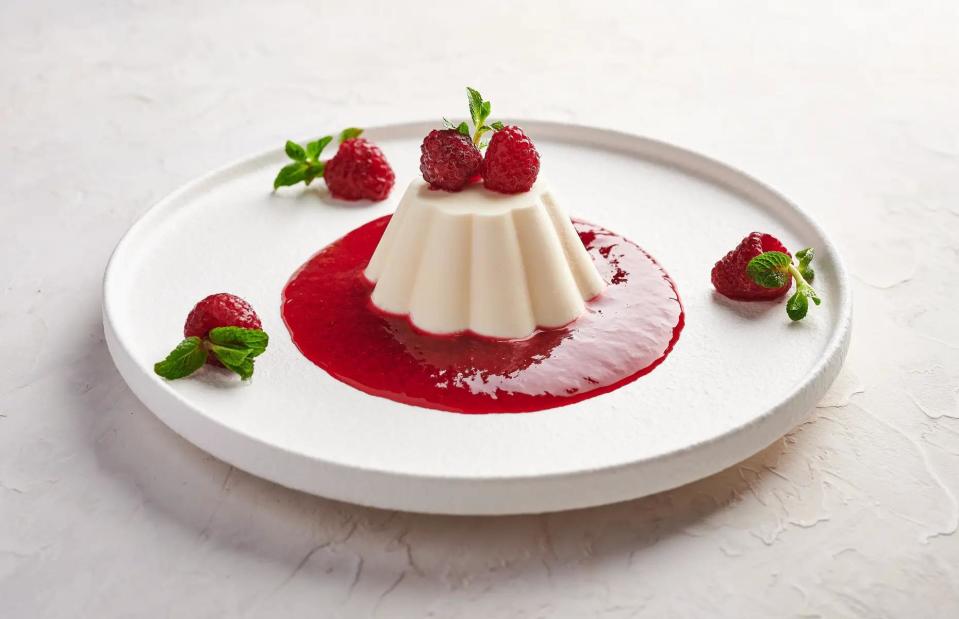
Vitaly Krivchikov/Shutterstock
Hailing from the Piedmont region of Italy, the panna cotta is an exercise in beautiful simplicity. This dessert is formed by creating a sweetened cream, thickening it with gelatine, then chilling it in a mould until set. This base can be flavoured with a number of different ingredients (such as vanilla, cinnamon, rum or Marsala wine). It's best served alongside a sharp fruit compôte to contrast with the panna cotta’s smooth, creamy taste.
24. Qatayef, Middle East

Nailya Yakubova/Shutterstock
A qatayef (or katayef) is a traditional Middle Eastern dessert that dates back over a thousand years, and it's especially popular during the month of Ramadan. The name refers more to the batter than the dessert itself, as there are two main ways to prepare it: it can be formed into a dumpling, stuffed with nuts and sugar, then deep fried until golden brown, or folded, piped full of sweet cream cheese and dusted with nuts.
23. Eton mess, England, UK
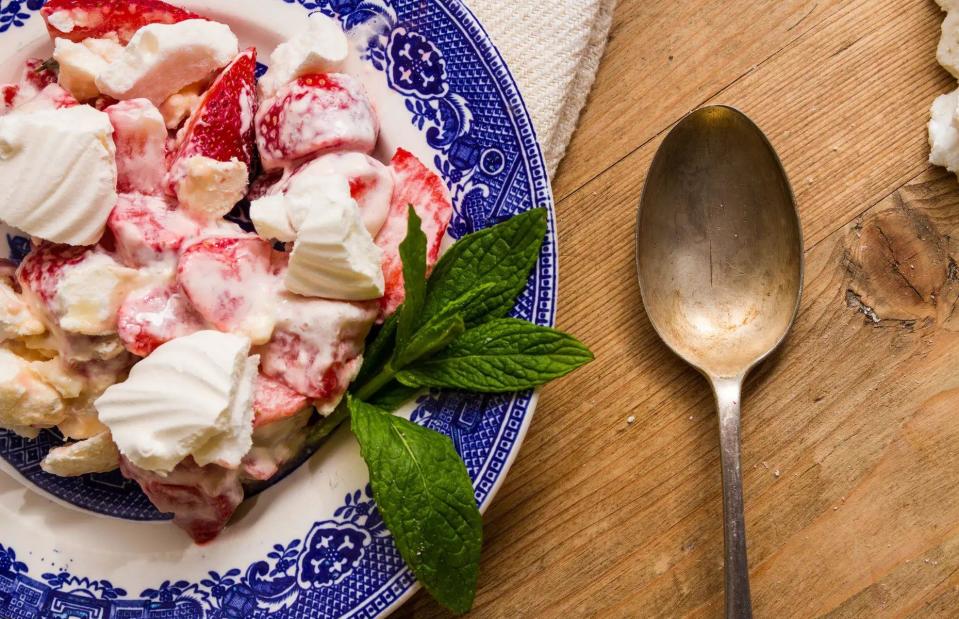
Piccia Neri/Shutterstock
This dessert is named after the world-famous British boarding school, Eton College, in Berkshire, England. Legend has it that the first Eton mess was created during a cricket match against rival school Harrow, when a berry, cream and meringue pudding was accidentally dropped. Rather than scrap the dessert, it was served smashed up. Today, deliberately broken-up chunks of meringue are served with rich, thick cream and beautifully tart summer fruits.
22. Pecan pie, USA
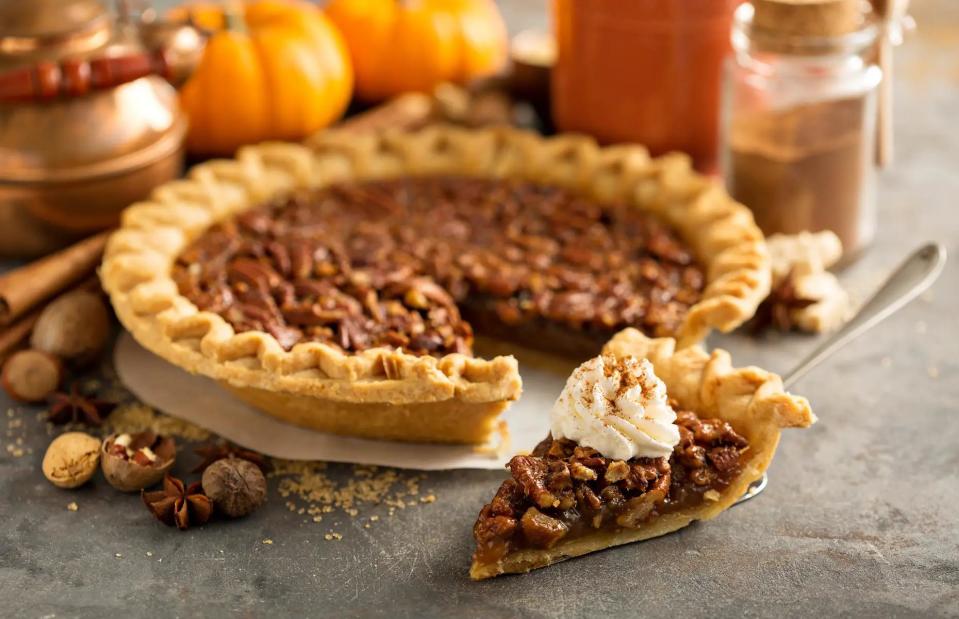
Elena Veselova/Shutterstock
There are few desserts so closely tied to the Southern USA as pecan pie. People living in the region have been eating pecans for thousands of years, though the first known recipe for modern pecan pie was published by a corn syrup manufacturer. Fans of the treat can’t get enough of the contrast of flavours between the deep nutty taste and super sweet syrup.
21. Pavlova, Australia or New Zealand
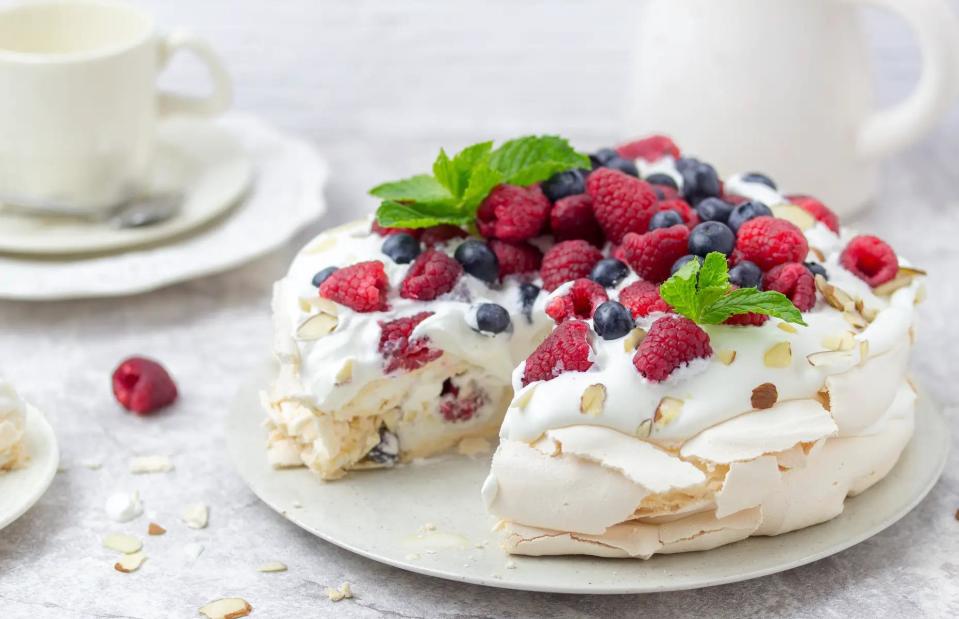
Volha Zvonik/Shutterstock
The Pavlova was named for the famed ballerina Anna Pavlova when she toured Australia and New Zealand, though neither country can agree about which side of the Tasman Sea it was invented on. Pavlova is all about texture, with a base of meringue made by beating egg whites with caster sugar, lemon juice, cornflour and vanilla. The meringue is baked low and slow to create a dessert with a crispy, crunchy outside and marshmallow-like centre. To finish, it's topped with cream and fresh fruit such as kiwi, mango or berries.
20. Brownies, USA
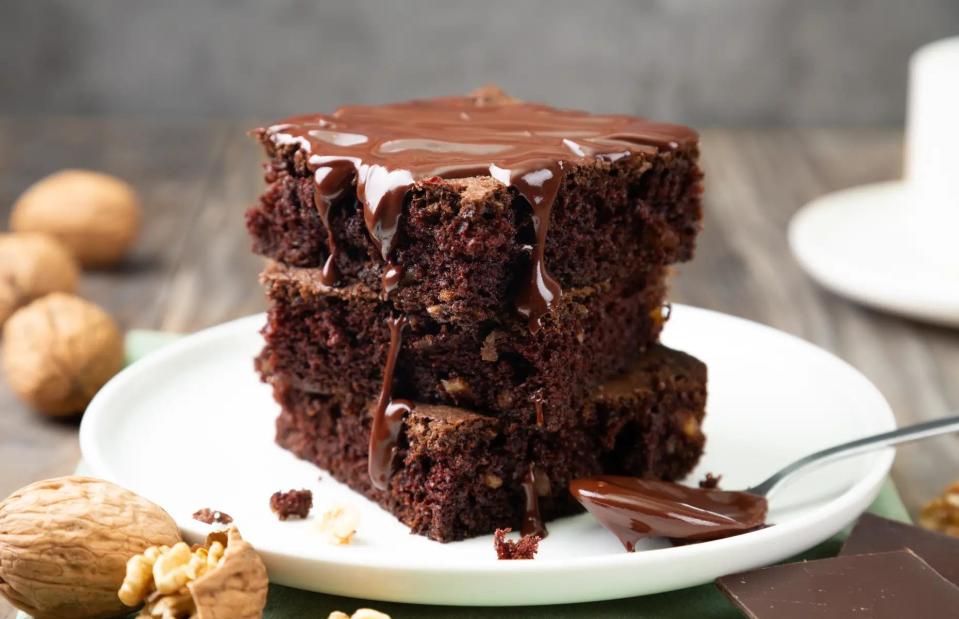
asife/Shutterstock
As with many famous dishes, the exact origin of the brownie is hotly disputed; one of the most widely held theories is that it was invented at The Palmer House Hotel in Chicago, Illinois, for the Columbian Exposition World’s Fair in 1893. Since then, it's become a staple of dessert menus and cake shops worldwide. Whether served cool on their own, warm with a scoop of vanilla ice cream or broken up as a part of a sundae, brownies are a treat we can't get enough of.
19. Rote grütze, Germany
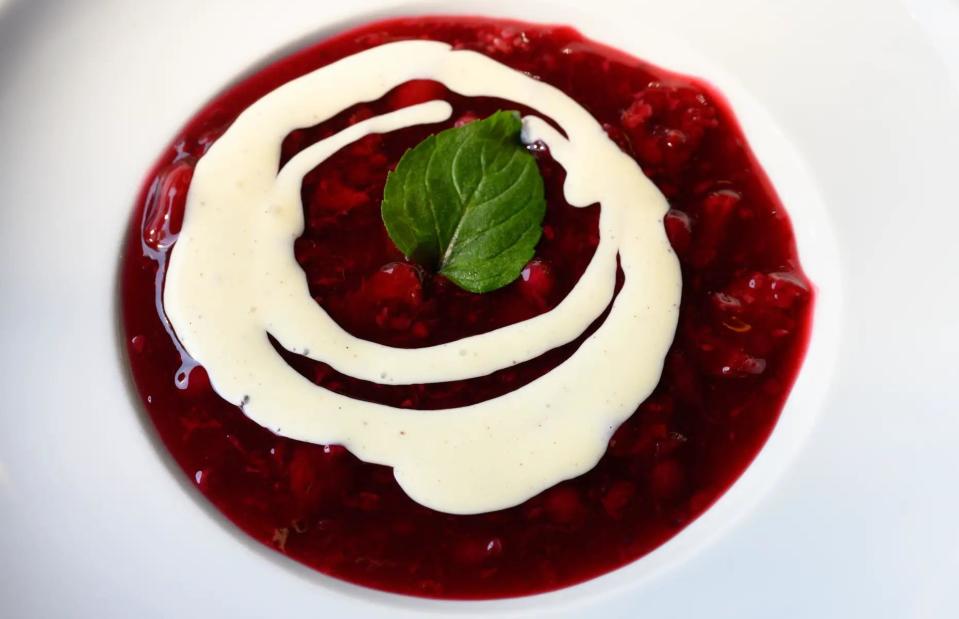
Dietmar Rauscher/Shutterstock
This classic German summer dish is made by creating a gelatinous pudding from berries such as redcurrants, raspberries and blackcurrants. Translating roughly as red fruit jelly, the dessert starts with a compôte; starches and sugar are stirred in to create a thick, sweet and slightly tart pudding. It can be served hot or cold, usually alongside milk, cream, ice cream or custard. Denmark has a similar dessert, rødgrød –and variations of rote grütze can be found across Baltic and Scandinavian countries, too.
18. Tarte Tatin, France
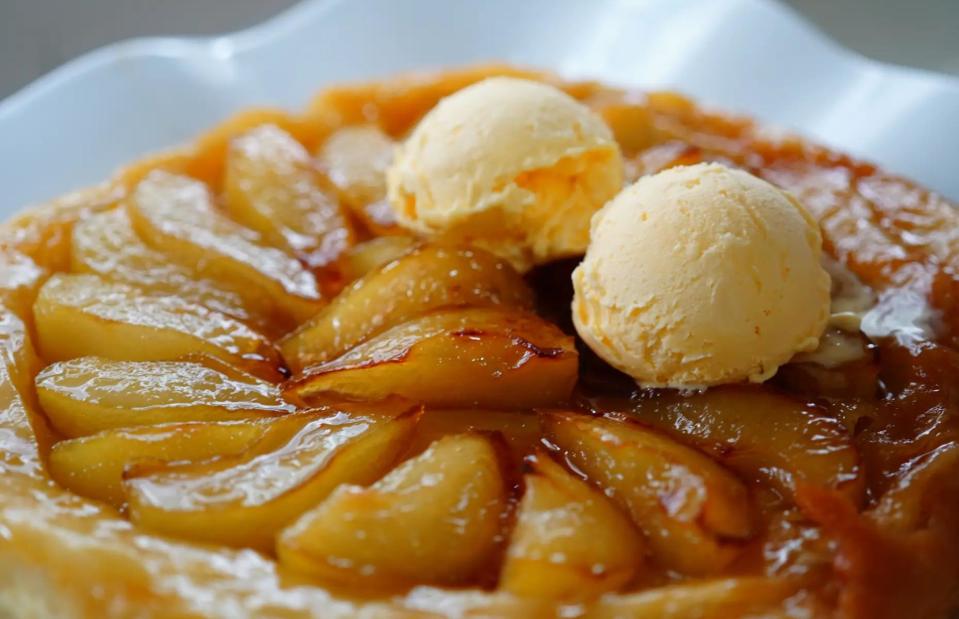
Khalilah Mohd Nor/Shutterstock
The world has various takes on apple pie, but France’s Tarte Tatin may be the most innovative of all. It's named after the Tatin sisters, who are said to have developed the recipe in the late 19th century at their hotel and restaurant in the Central Loire Valley. It all starts with a buttery caramel, made in a heavy-bottomed frying pan; apple slices are added, then the whole thing is topped with pastry and baked in the oven. When done, the tart is turned out onto a plate and served with a scoop of vanilla ice cream.
17. Kulfi, India
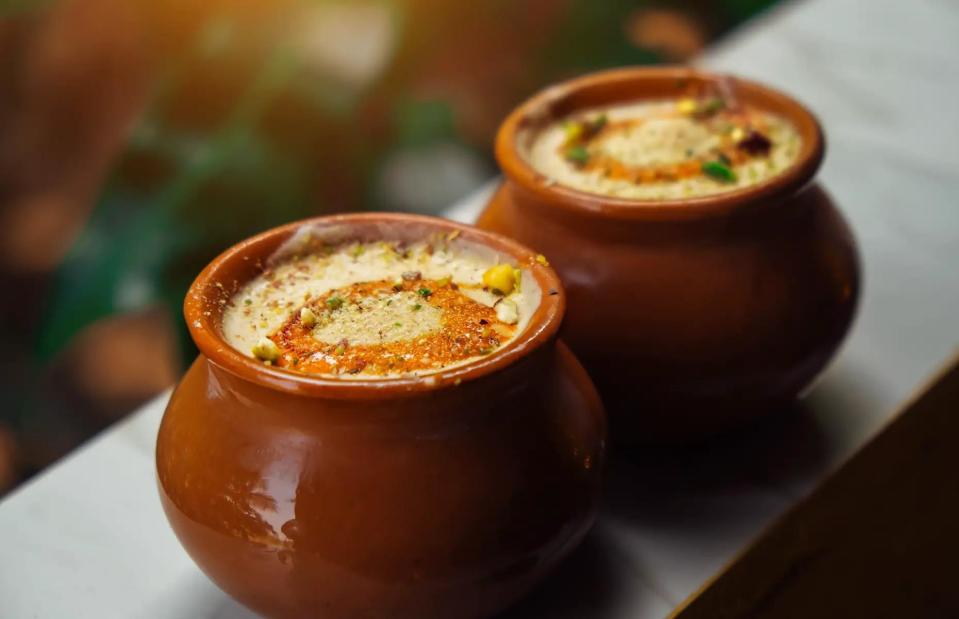
Kate Stock/Shutterstock
Kulfi is a traditional Indian ice cream that has a much higher fat content than typical ice cream or gelato. It also isn’t whipped – and this added density makes kulfi more suitable to the local climate, as it melts far more slowly than regular ice cream. Milk is flavoured with ingredients such as pistachios, mango and saffron, and slowly boiled down until a solid mass forms. This is then put into sealed moulds, which are, in turn, plunged into salted ice. This process ensures a thick, creamy, frosty dessert.
16. Tiramisù, Italy
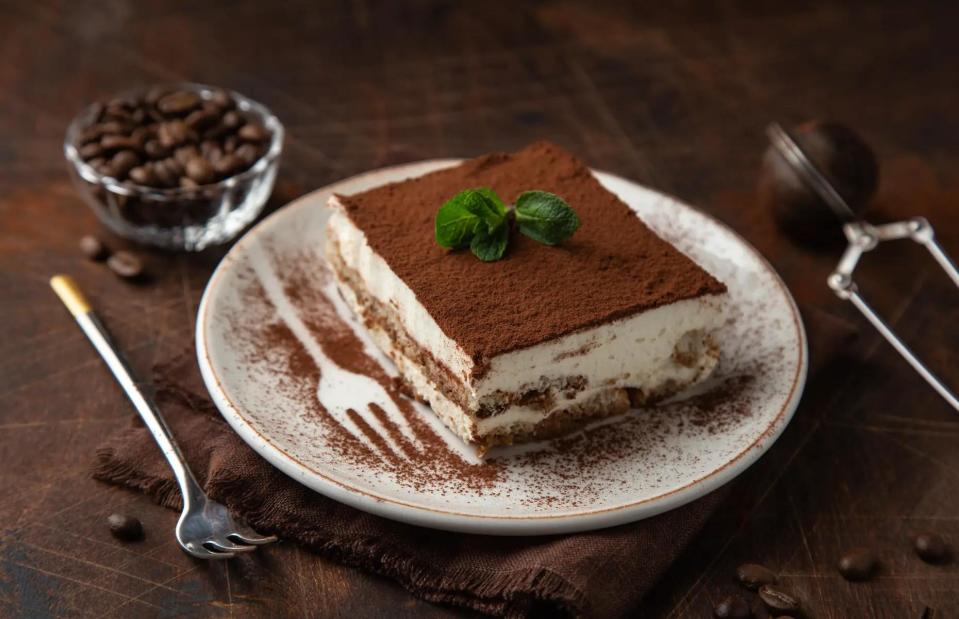
Anna Shepulova/Shutterstock
For such a beloved dessert, tiramisù is a relatively recent creation, having first been made in the 1960s. However, it's since become one of the most popular Italian desserts in the world. The dish is characterised by its coffee and liqueur flavours, which infuse savoiardi (sponge fingers). These are layered between a cream filling made with egg, sugar and mascarpone, and the whole dish is then dusted in cocoa. Served cold, tiramisù offers an irresistible balance of bitter, creamy, sharp and sweet flavours.
15. Crème brûlée, France
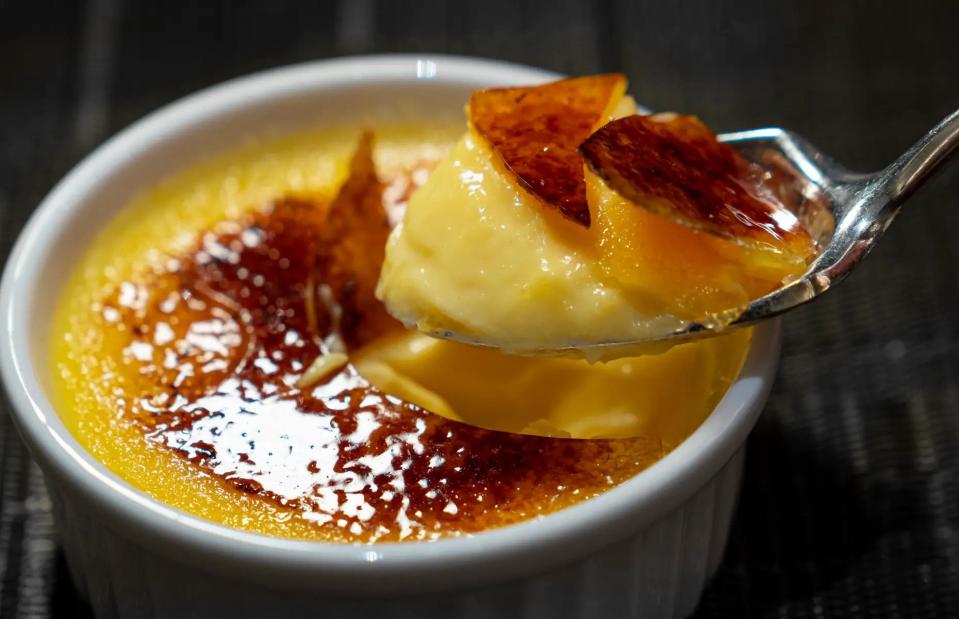
pic0000/Shutterstock
Recipes for crème brûlée first appeared in French cookbooks in the mid-17th century – and the dessert has remained popular ever since. It's essentially a vanilla-flavoured custard, but its main USP is its caramelised top. A layer of sugar is dusted over the custard, and the whole thing is grilled until crisp and dark brown. From the satisfying crack of breaking through the top layer to the contrast between warm, hard caramel and cool, creamy custard, this dessert delights all the senses.
14. Frozen yogurt, USA
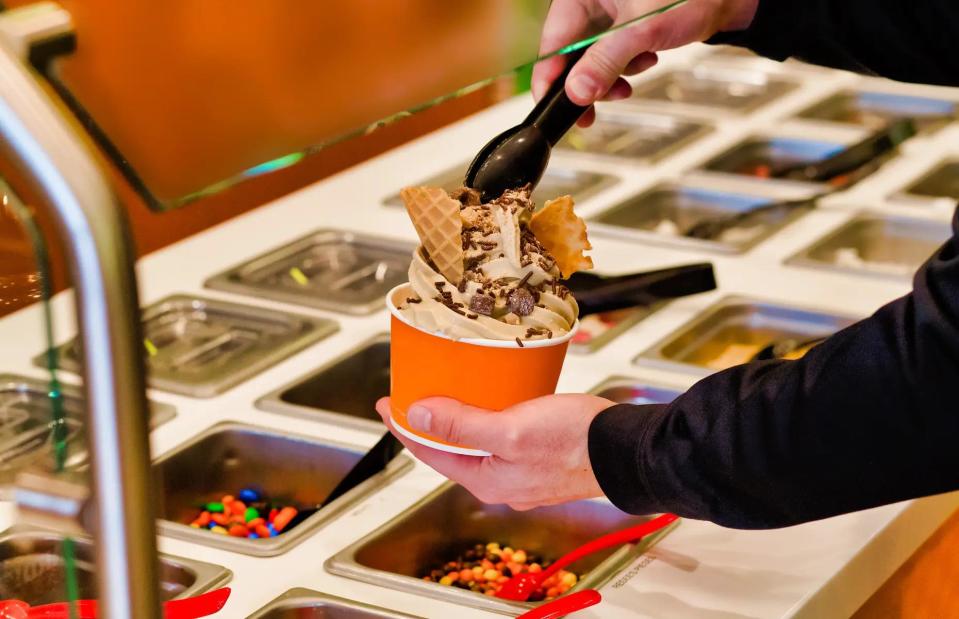
EvgeniiAnd/Shutterstock
Frozen yogurt is ice cream’s sharper and much younger sibling, invented in New England in the 1970s. Whether or not that makes it better is a matter of opinion, though there's no doubting its popularity across the US and beyond. Fro-yo shops typically sell dozens of flavours and even more toppings, from simple honey and berries to sweets, chocolate and sauces galore.
13. Sticky toffee pudding, UK
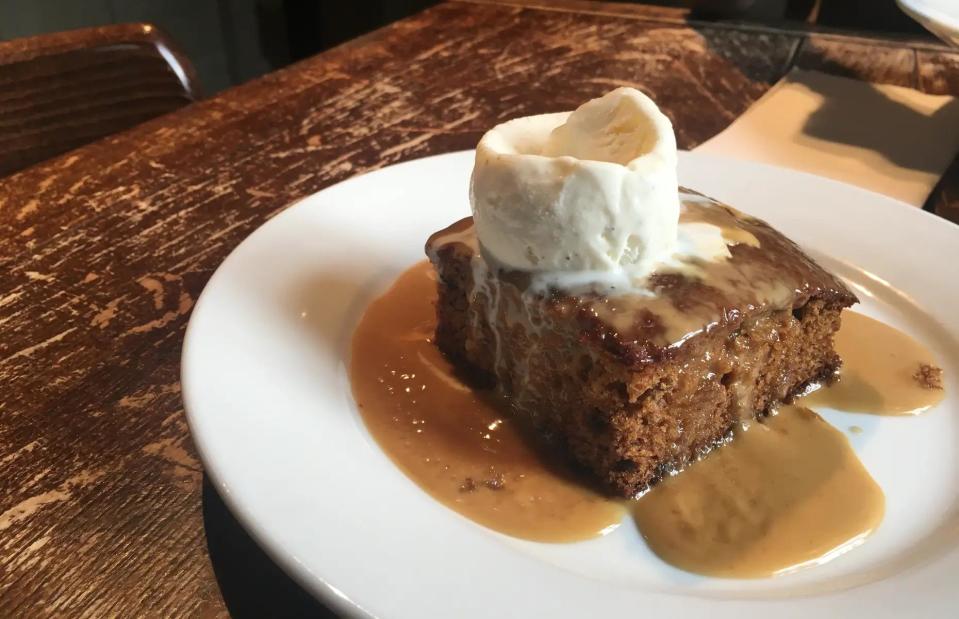
PLUS1/Shutterstock
Britain's beloved sticky toffee pudding is claimed by various places throughout the UK; there's one story that says it was born in the Lake District in the 1970s, another that it was conceived in Aberdeenshire, Scotland a few years earlier, and a further claim that it was invented in Yorkshire in 1907. It can be found on restaurant menus across the British Isles, with a rich, moist sponge – typically spiced with cloves and dates – and sweet, sticky toffee sauce at its heart.
12. Black Forest gâteau, Germany
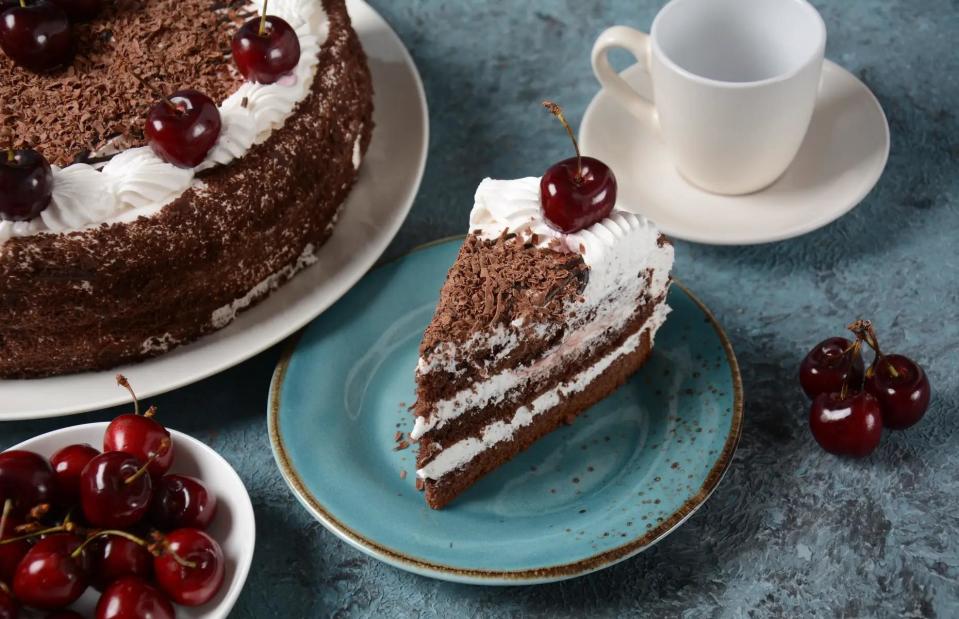
Natalia Hanin/Shutterstock
This dark, rich cake is perhaps Germany’s most famous culinary creation. Paying homage to the Black Forest region, it features layers of chocolate sponge sandwiched with whipped cream and cherries. A traditional Black Forest cherry spirit, Kirschwasser, is also usually added to the sponge or blended into the cream. A final decoration of cherries, chocolate shavings and whipped cream finishes off this decadent delight.
11. Nanaimo bar, Canada
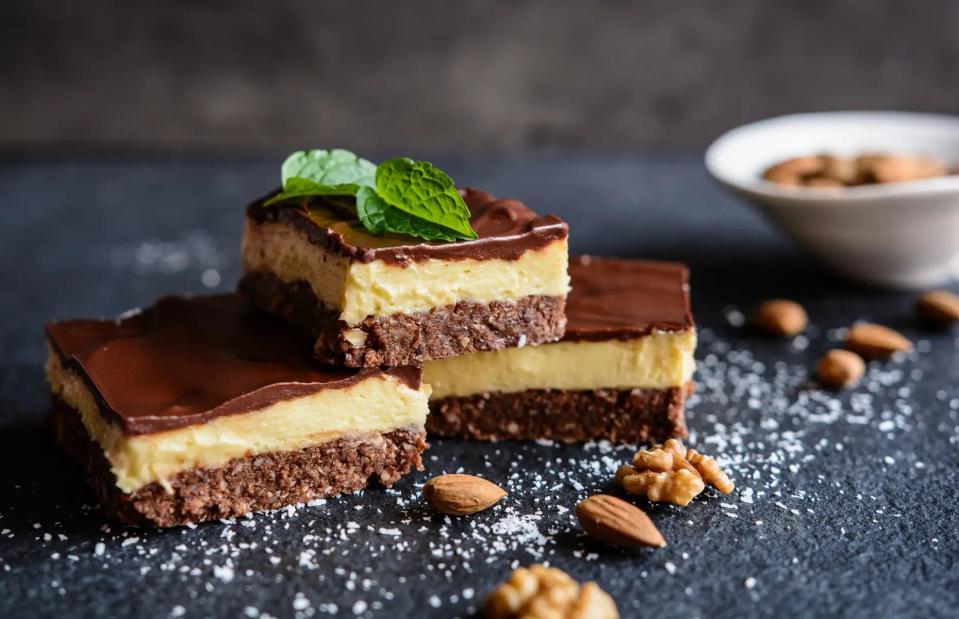
NoirChocolate/Shutterstock
This no-bake dessert bar is one the most popular desserts in Canada, served everywhere from home tables to state dinners. Named after the city of Nanaimo in British Columbia, these bars are made up of three distinct layers: the base consists of wafer, nuts and coconut crumbs, the middle of custard icing, and the top of chocolate ganache. This unbeatable combination of flavours has even seen the Nanaimo bar put on a postage stamp – which was duly criticised by Canadians, who questioned the ratios of the three layers in the design.
10. Cendol, Southeast Asia
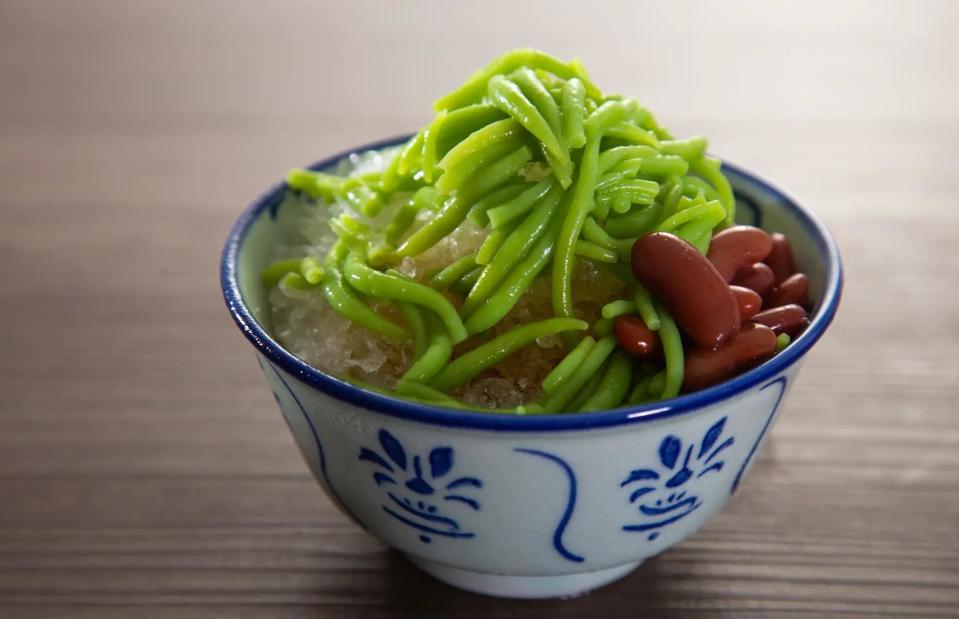
Bored Photography/Shutterstock
Cendol is a hugely popular dessert across all of Southeast Asia, with each country preparing the dish slightly differently. The basic version of the recipe sees gelatinous rice flour noodles (made green by pandan leaves) mixed with coconut milk, palm sugar and shaved ice. Jellies and fruits are typically piled on top for a delicious, cool and creamy dessert.
9. Mochi, Japan
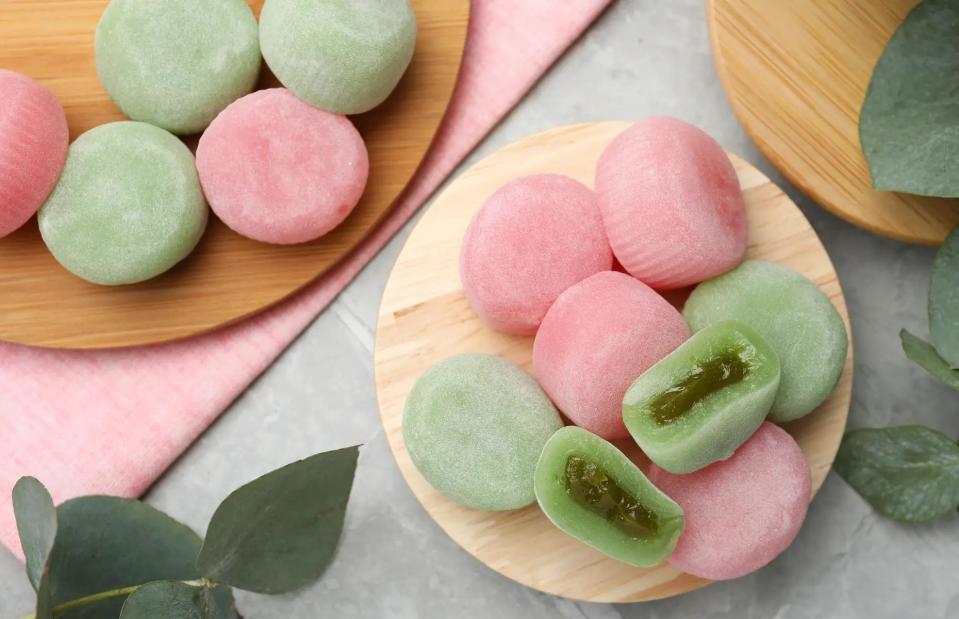
New Africa/Shutterstock
Absolutely everything about mochi is spectacular. The traditional processing of the glutinous rice is a sight to behold, as a pounder and stirrer work in perfect rhythmic harmony to transform the rice into the dessert’s sticky base. This can then be coloured or filled with fruits, pastes or ice cream. Some of the best-known mochi varieties are kusa mochi – which are easily recognisable thanks to their deep green colour – and anko daifuku, which are pink and come filled with a sweet red bean paste.
8. Tres leches cake, Latin America
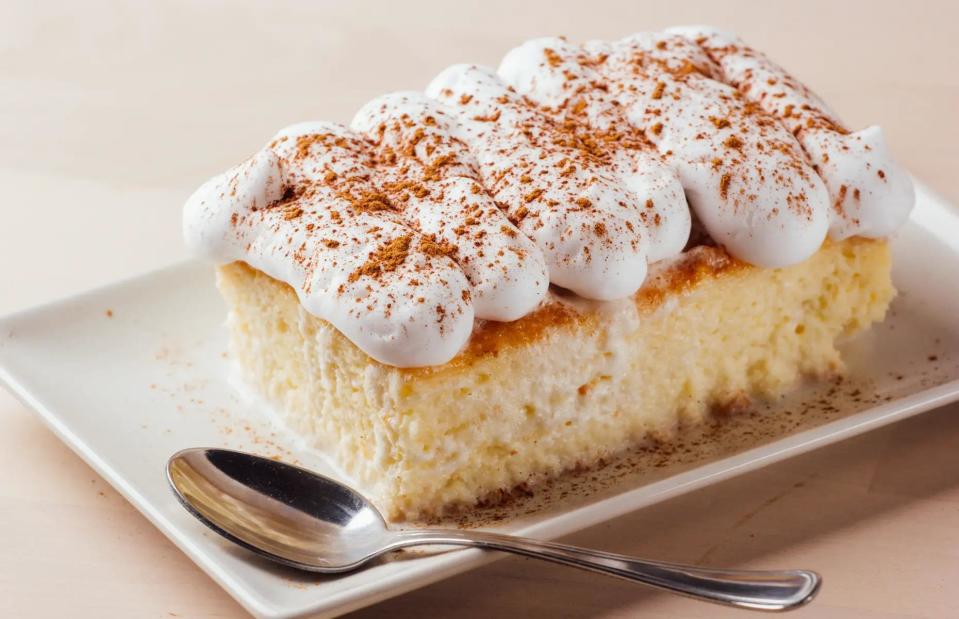
nehophoto/Shutterstock
Some people say the tres leches cake originates from Nicaragua, where it's the national pastry, while others claim it's from Mexico. Regardless of the exact location of its inception, the cake is hugely popular across Latin America. The dish starts with a light, airy sponge, which is then soaked in the three milks its name refers to: condensed, evaporated and whole. The cake’s lightness means it takes on a pudding-like consistency rather than becoming soggy, giving it an irresistible, almost bouncy texture.
7. Baklava, Türkiye
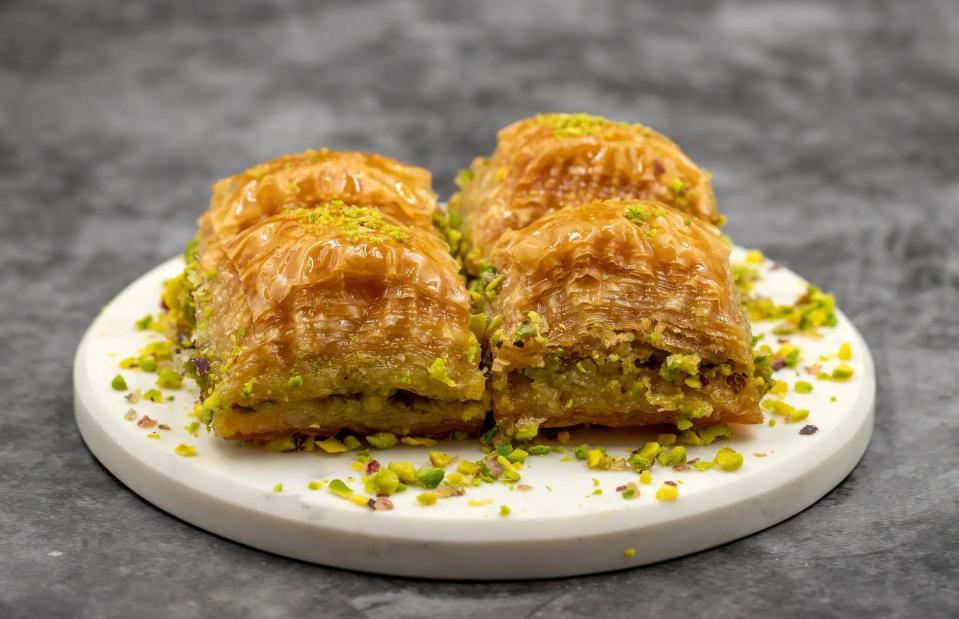
Enez Selvi/Shutterstock
While many countries boast a version of this dessert, the original most likely came from what is now modern-day Türkiye. Regardless of its exact heritage, baklava remains one of the world’s most iconic desserts. Impossibly thin layers of filo pastry and finely chopped pistachio nuts are layered up, with plenty of butter in between to further enrich the dessert, then baked. Once cooked, the individual squares are covered in a fragrant syrup, which soaks right in.
6. Key lime pie, USA
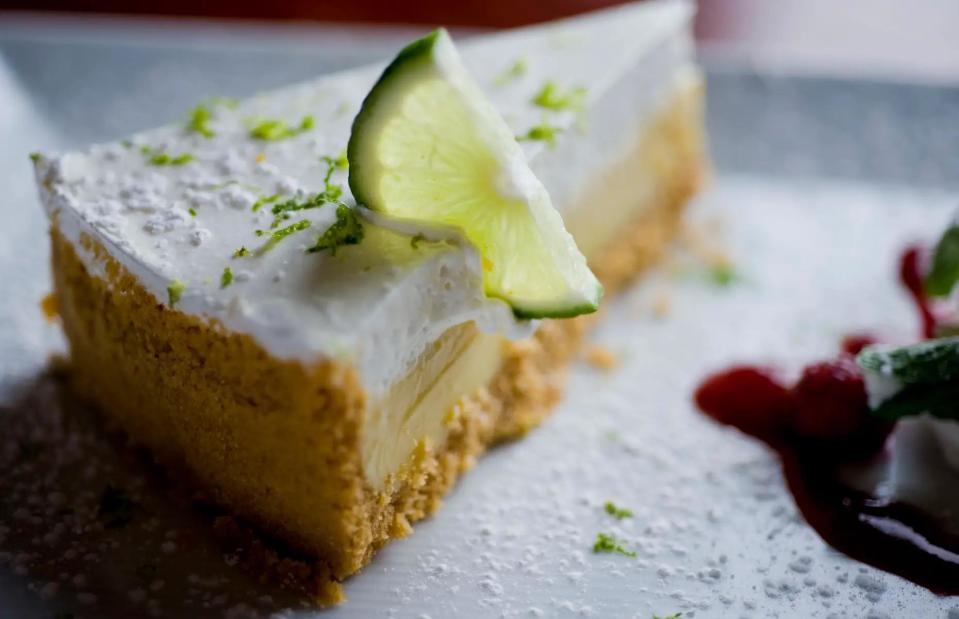
Marie Sonmez Photography/Shutterstock
Key lime pie emerged from Key West in the early 20th century and exploded in popularity to become Florida's official pie. The dessert itself is quite simple; a Graham cracker crust is filled with a condensed milk and egg filling flavoured with Key lime juice. It's then baked, with or without a heap of meringue on top. What makes this dessert so spectacular is the highly aromatic lime juice, which cuts through the rich sweetness beautifully.
5. Chocolate mousse, France
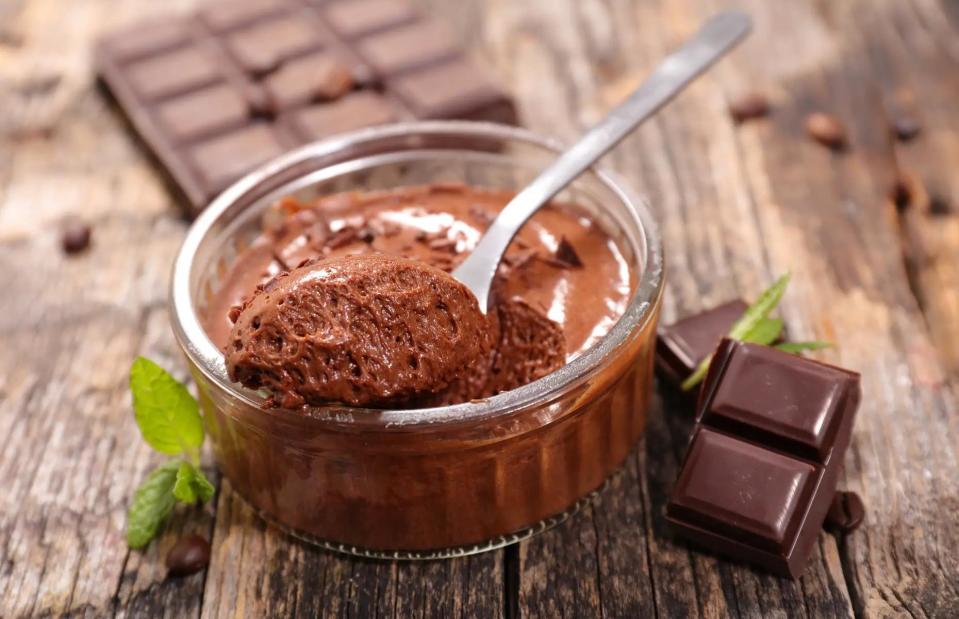
margouillat photo/Shutterstock
Mousses have been a part of traditional French cooking since the mid-18th century – and chocolate mousse is the most popular of them all. The dessert's light, airy texture is achieved by folding whisked egg whites through a mixture of cream and chocolate. It might not be the dinner party staple it once was, but chocolate mousse remains a timeless classic, and it can be found on restaurant menus around the world.
4. Apfelstrudel, Austria
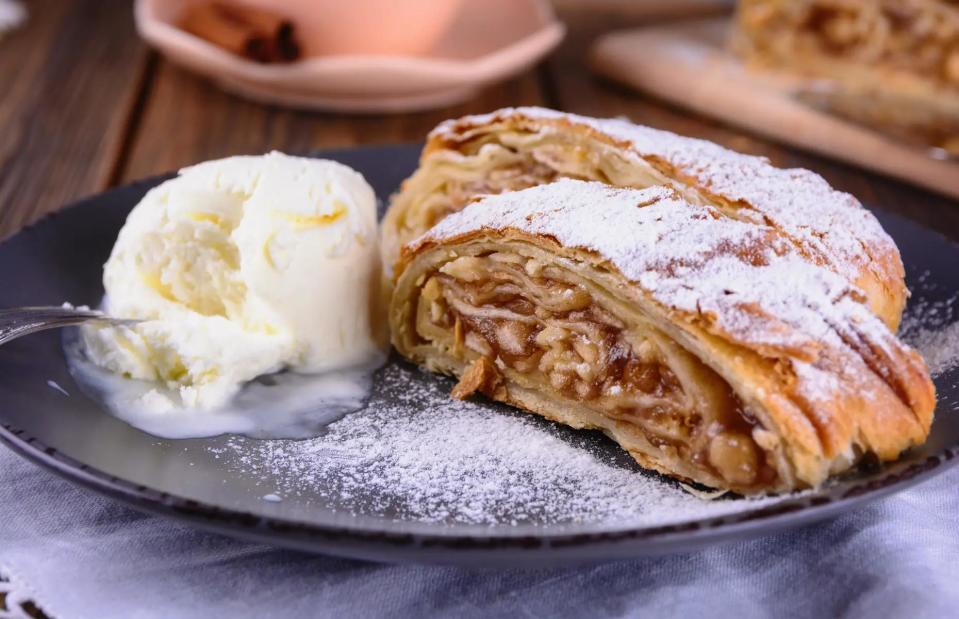
algus/Shutterstock
Hailing from the Austrian capital of Vienna, the apfelstrudel (or apple strudel) is popular all over Central Europe. The key to a good strudel is the dough, which is unleavened – and stretched so thin that it's said that the baker should be able to read a newspaper through it. The dough is spread across a huge baking surface, and the apple, sugar and cinnamon filling is piled into a corner. The pastry is then wrapped around it, giving a filo-like effect. After baking, this bundle of perfection is usually served with ice cream, whipped cream or custard.
3. Apple pie, various locations
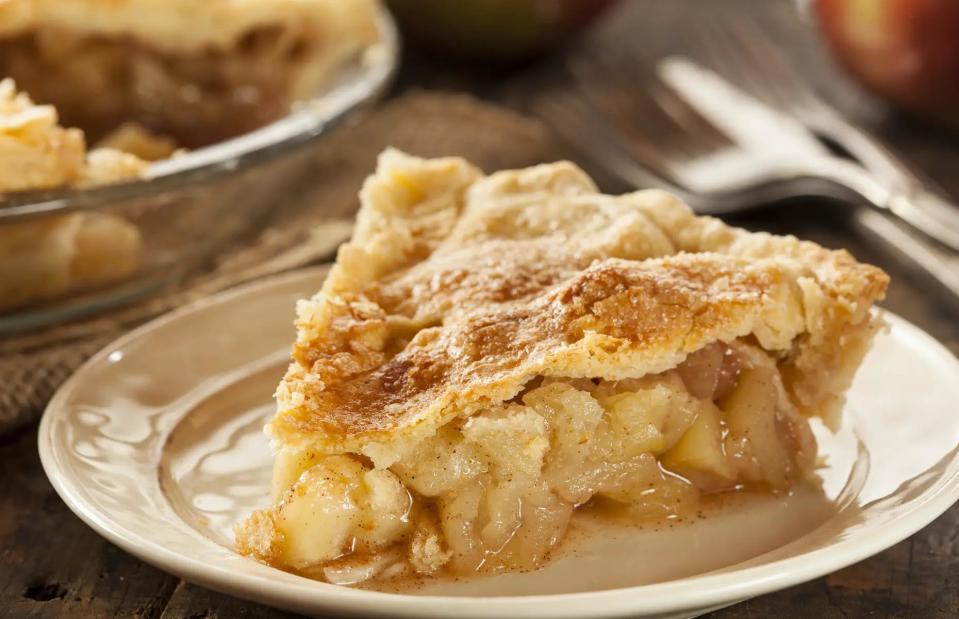
Brent Hofacker/Shutterstock
There's no more traditionally American dessert than apple pie and vanilla ice cream. Although the recipe originally came over with European settlers, the country has truly taken the dessert as its own. Many families have their own recipes, though the essentials always stay the same: a pastry base is filled with apples, then seasoned with nutmeg, cinnamon and a dash of lemon juice. The pie can be fully covered or topped with a pastry lattice before baking.
2. Cheesecake, various locations
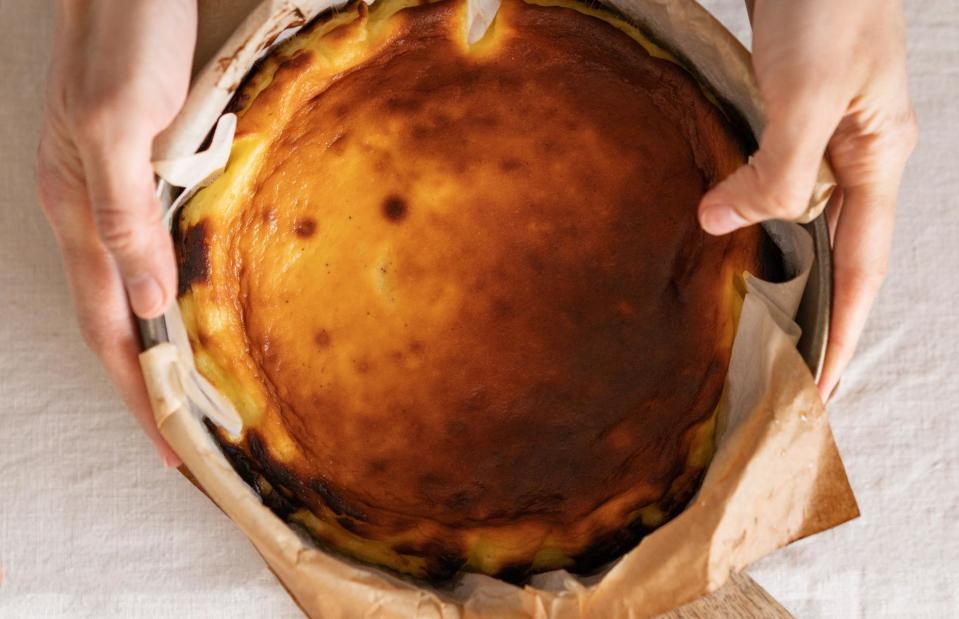
Dulin/Shutterstock
Cheesecake is believed to have originated in ancient Greece, where cheese was first kneaded with flour and honey. Now, of course, there are many variations of the dessert around the world, from smooth and creamy New York–style cheesecake to the baked-until-burnished version from Spain's Basque region. Japanese cheesecake is soufflé-like, while German varieties include käsekuchen, which has a shortcrust pastry base.
1. Ice cream, various locations
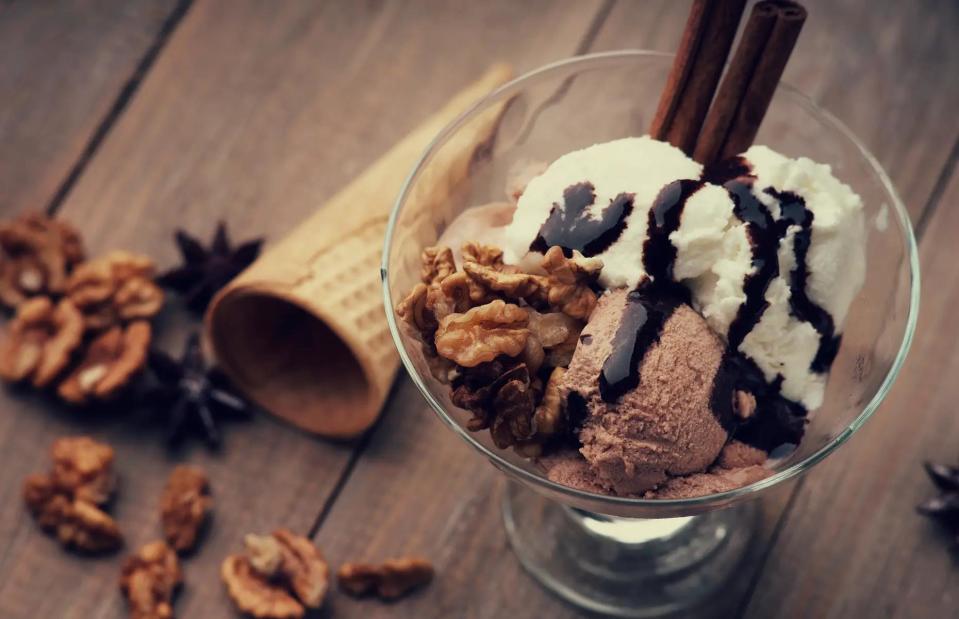
Deniss Grigorjevs/Shutterstock
No one is sure where ice cream was invented, though the earliest similar dessert can be traced back to China between the seventh and 10th centuries. Whatever its roots, ice cream is arguably the most versatile dessert in the world – from its seemingly endless variety of flavours to the different ways it can be served and eaten. Whether scooped into a cone, sandwiched between waffles, layered up for a sundae or eaten in a bowl as a refreshing end to a meal, it's loved the world over.
We think these retro dishes deserve a comeback. Do you?
Last updated by Lottie Woodrow.


